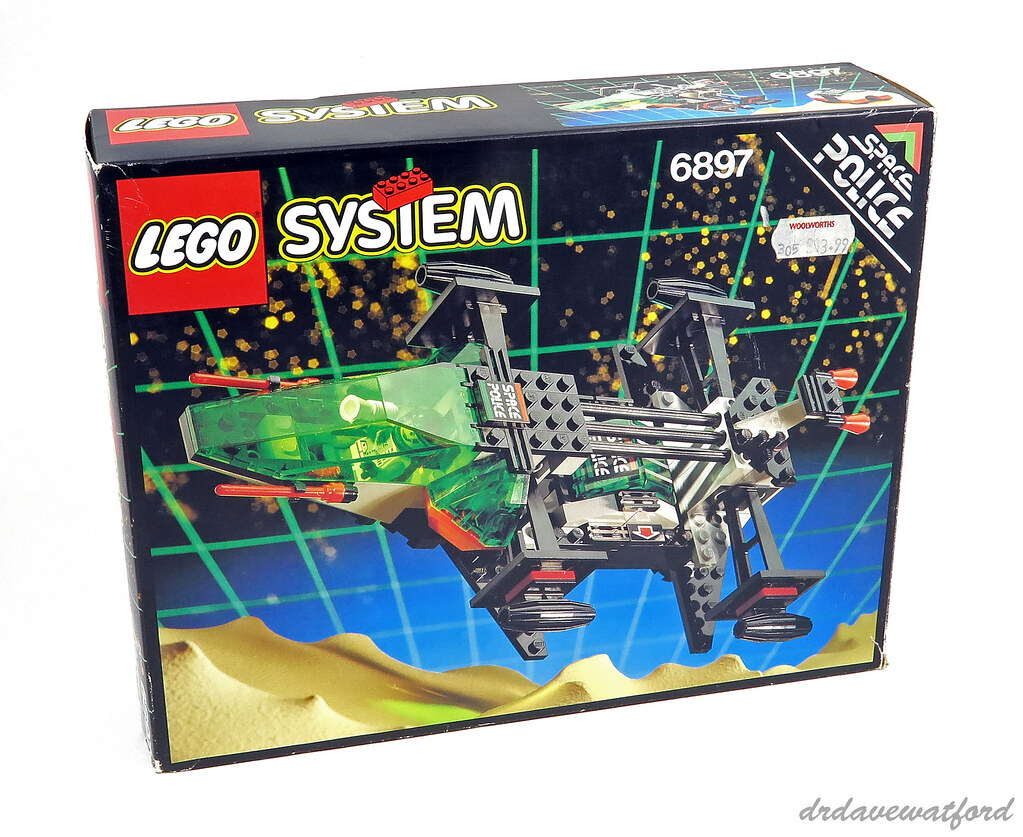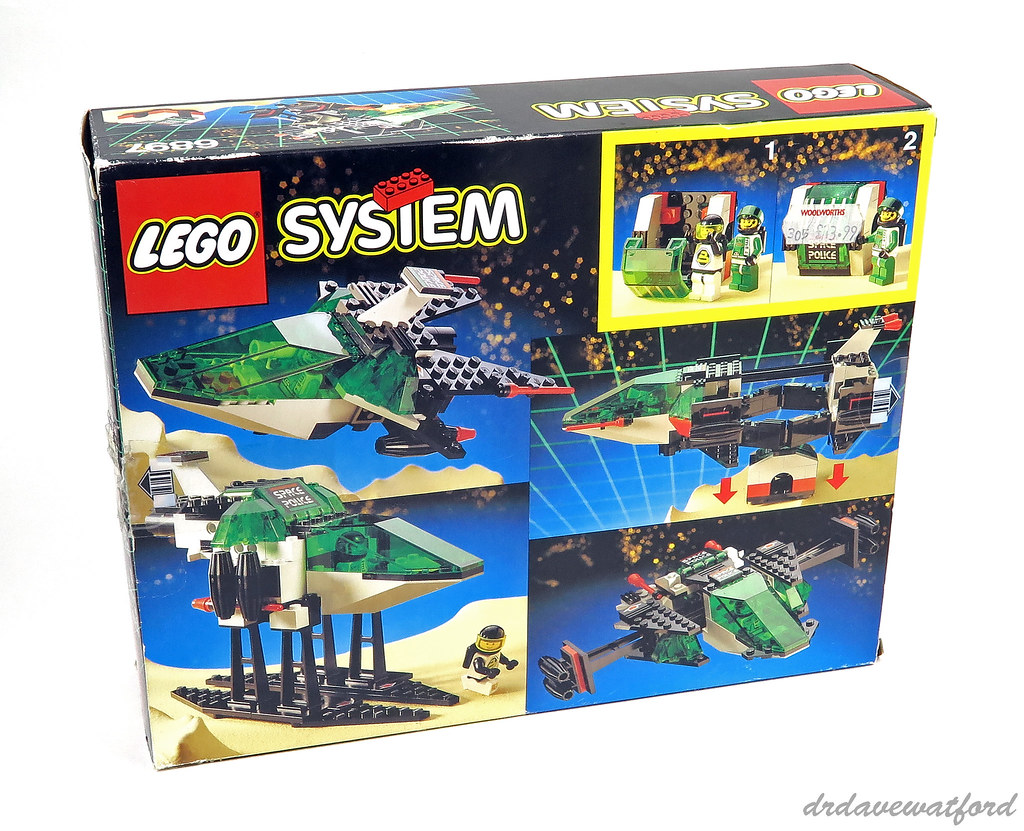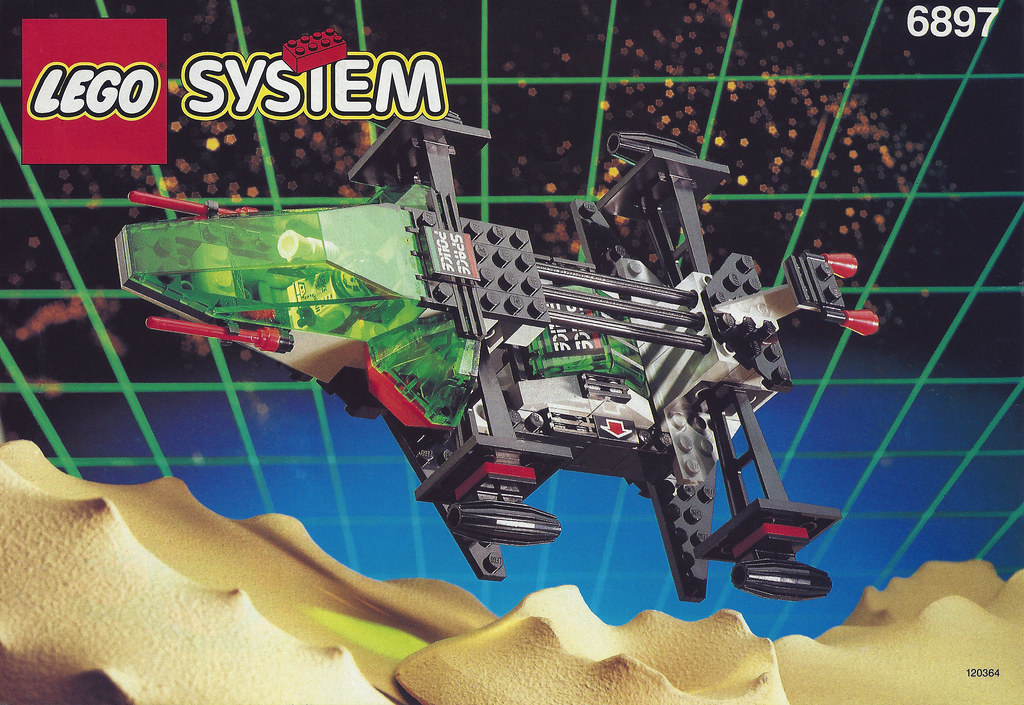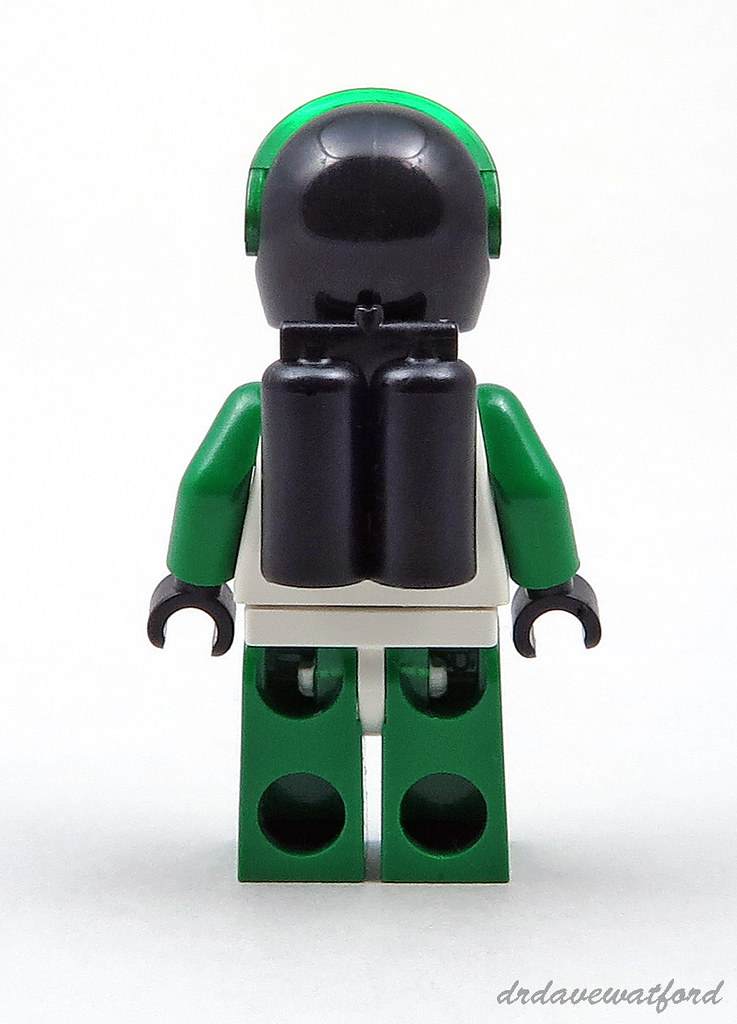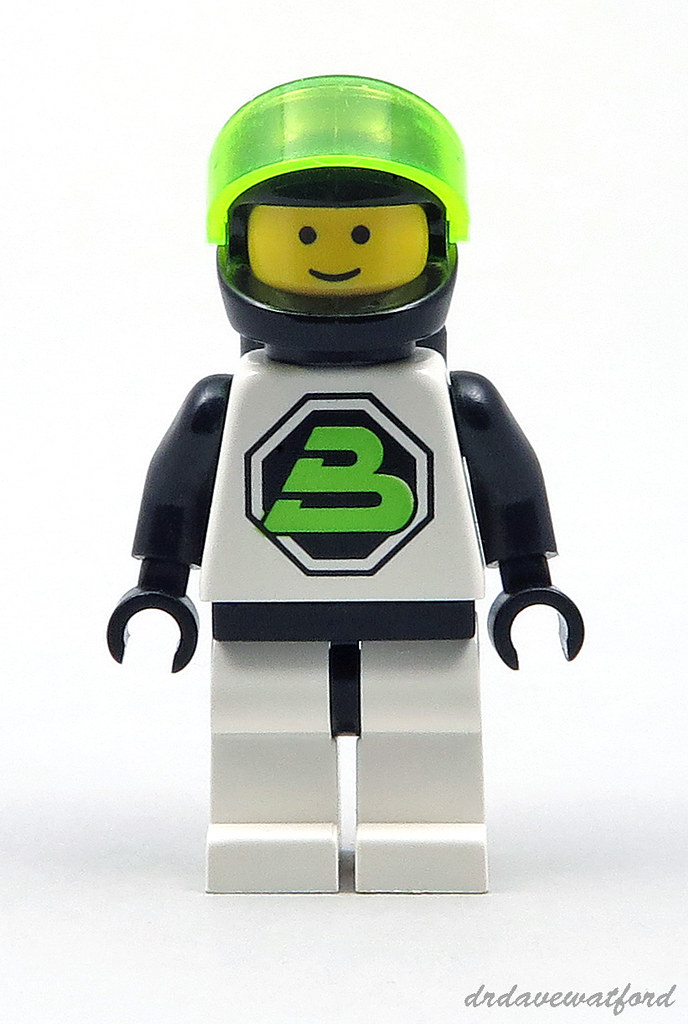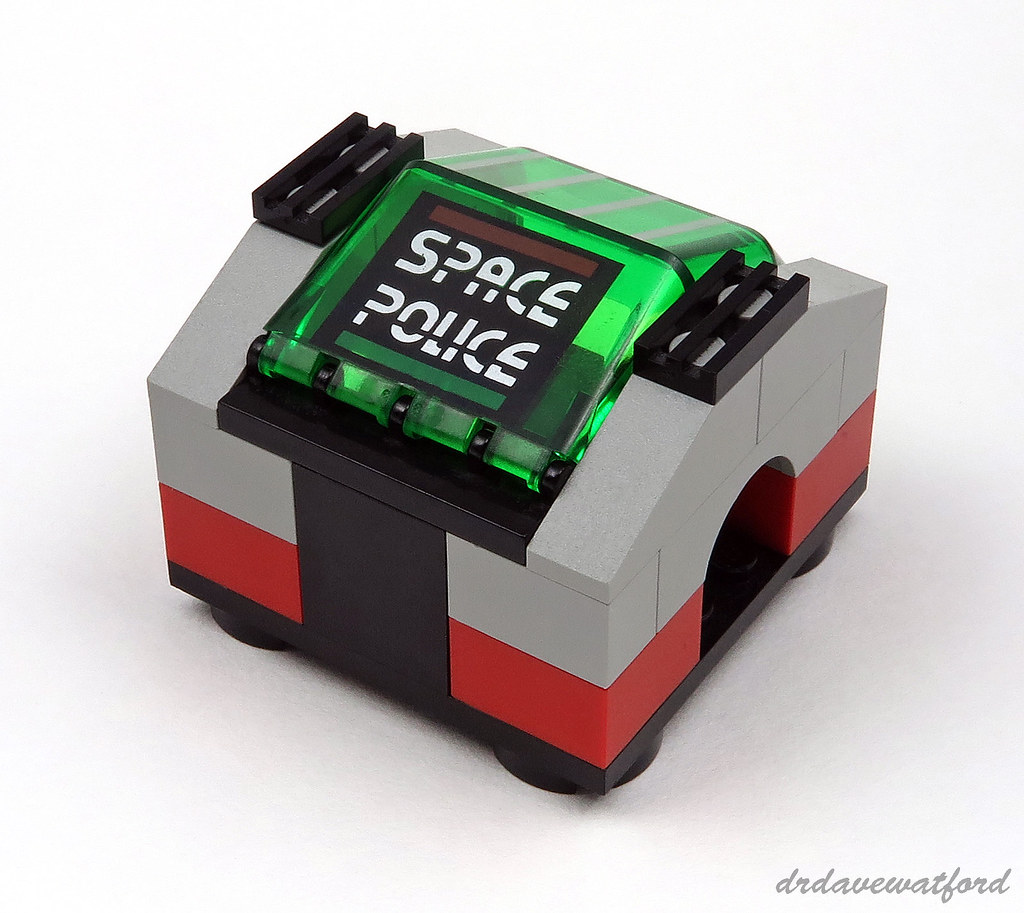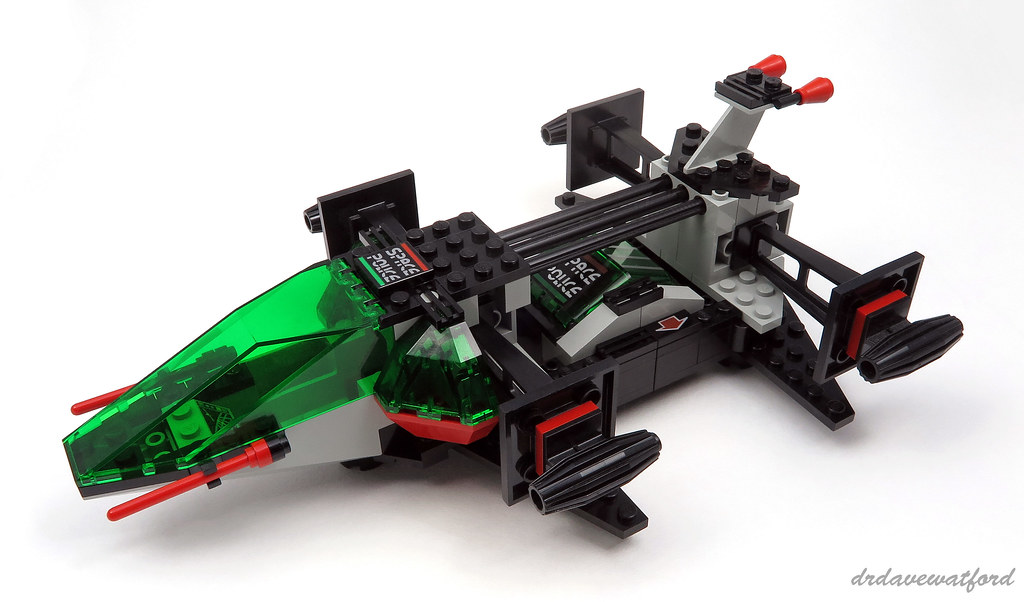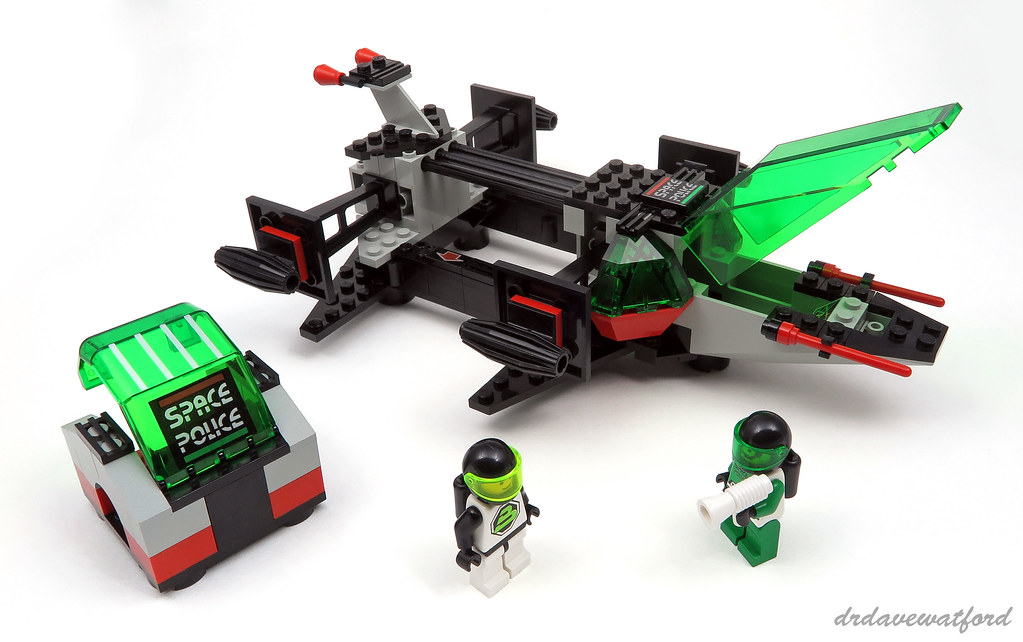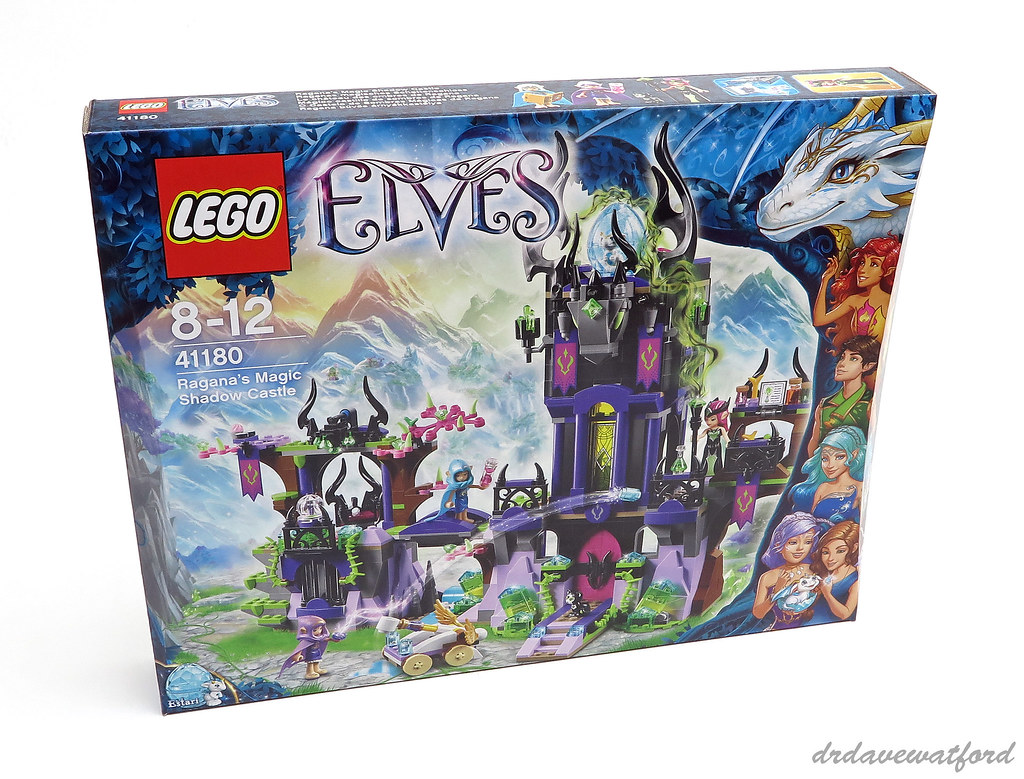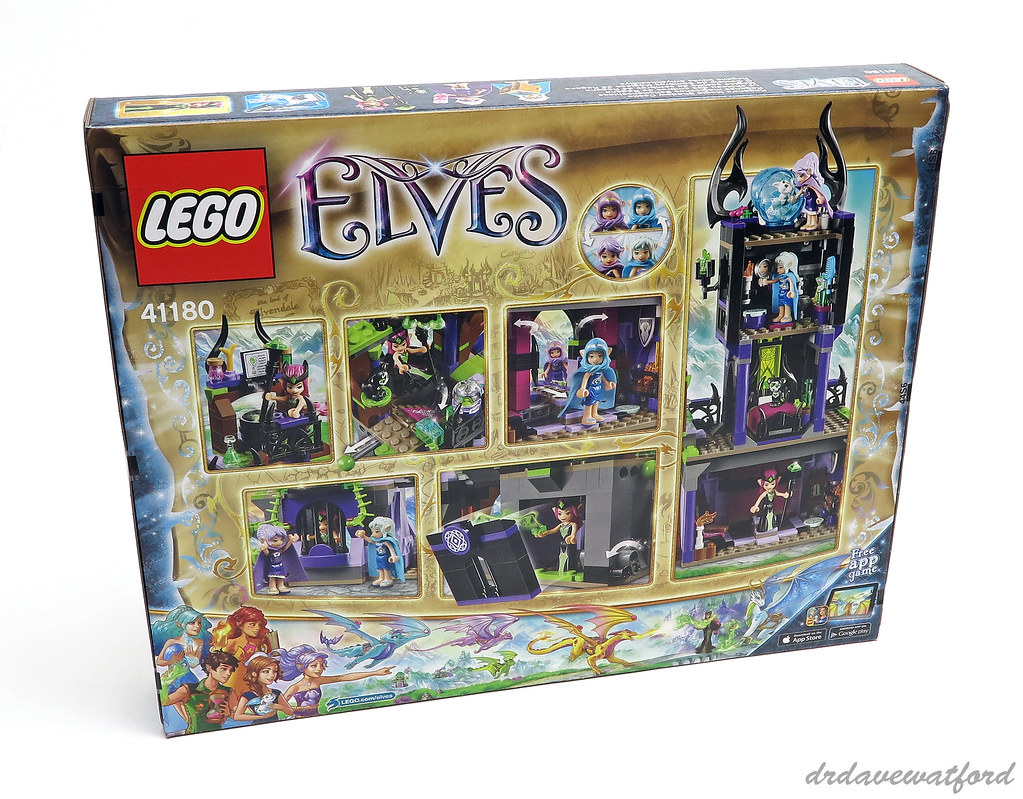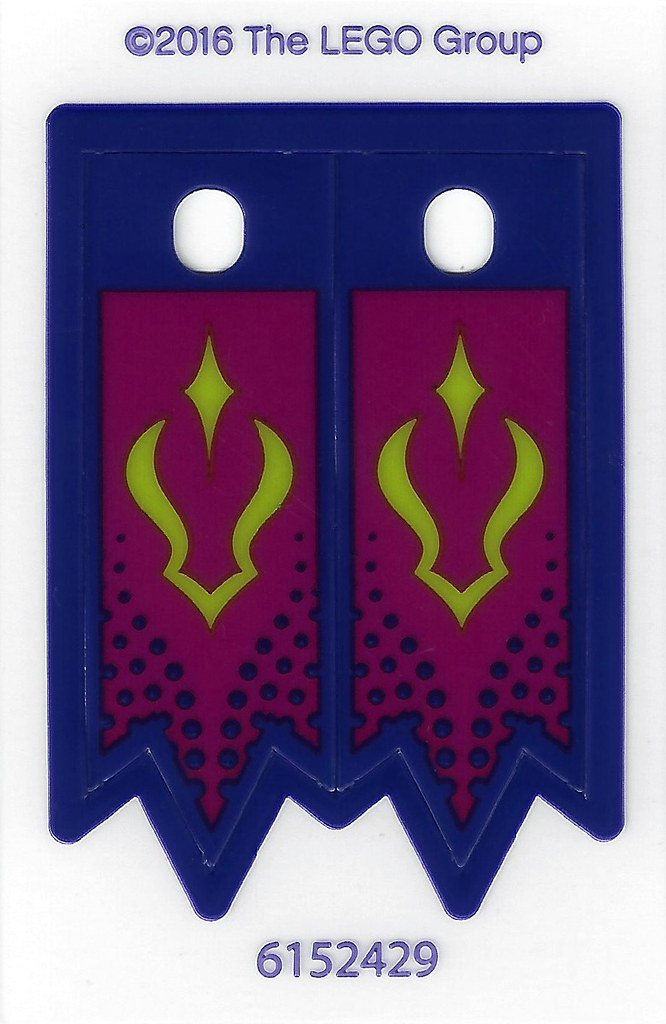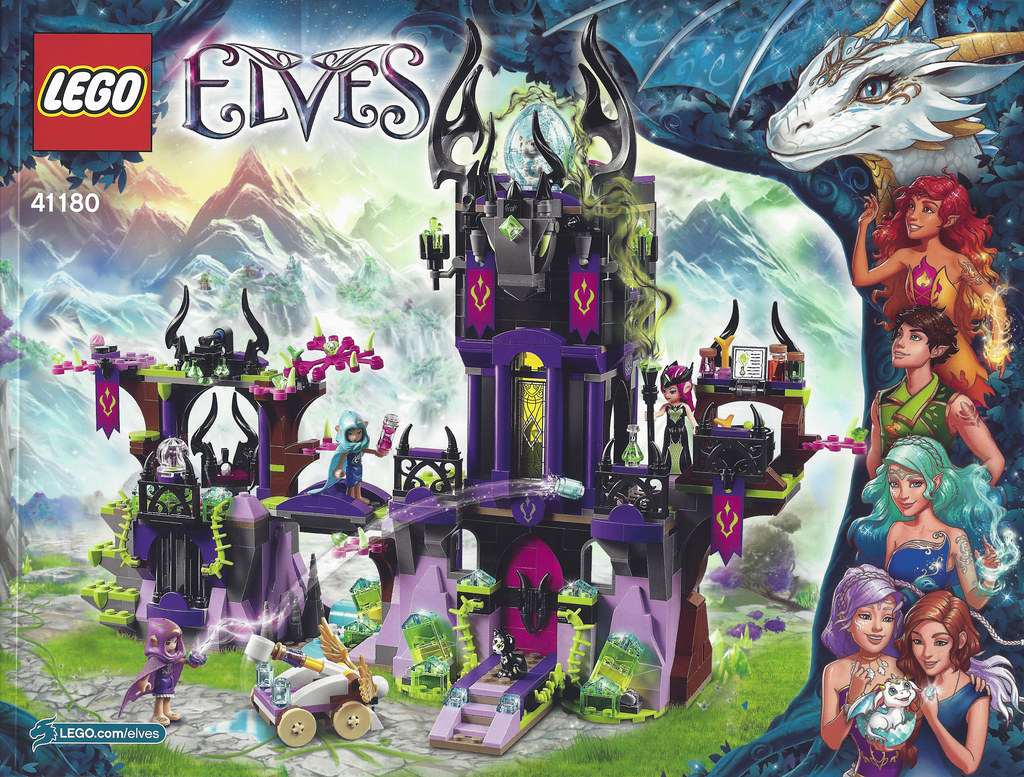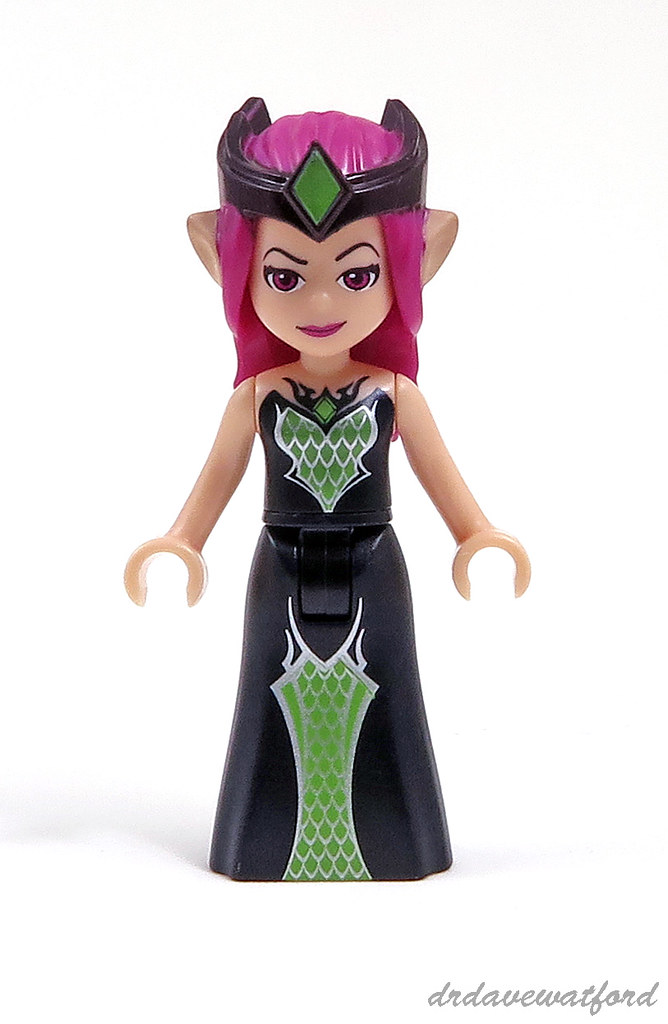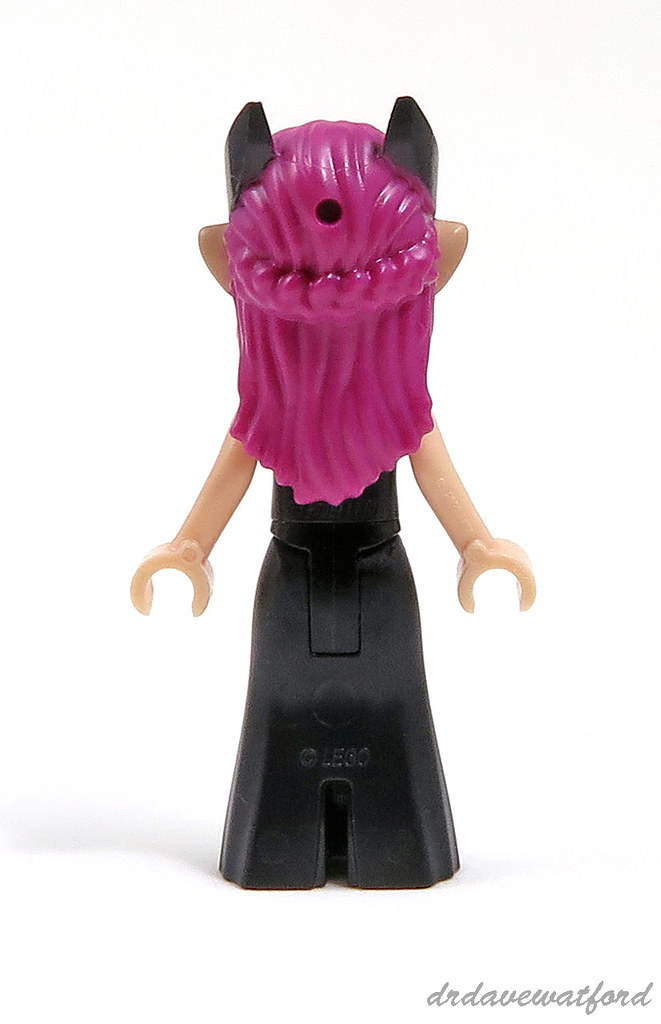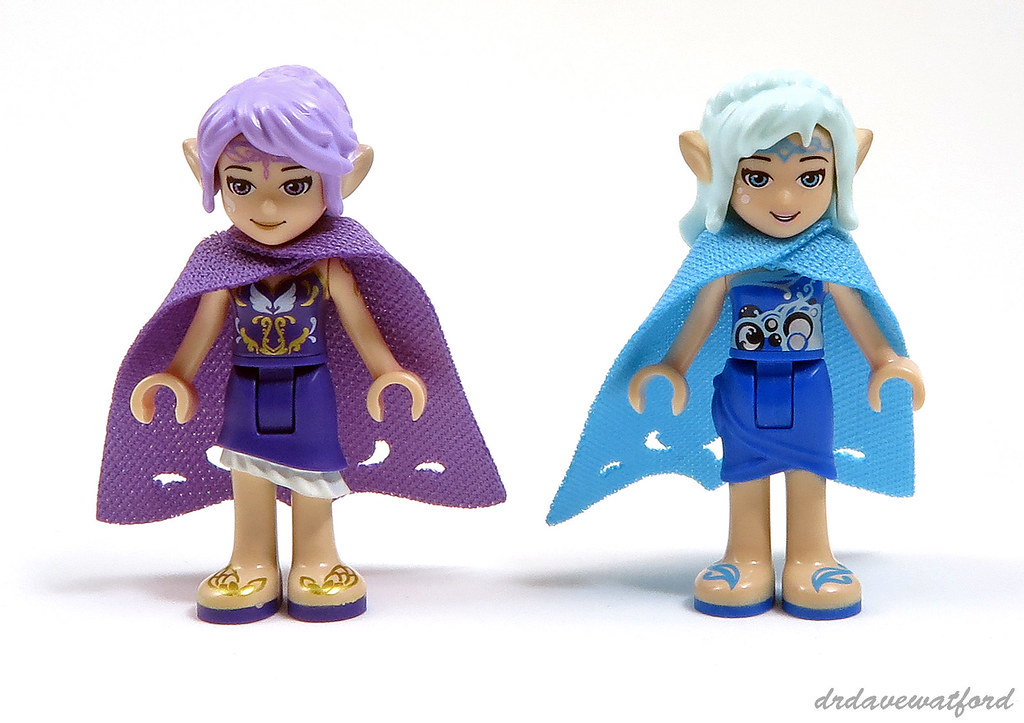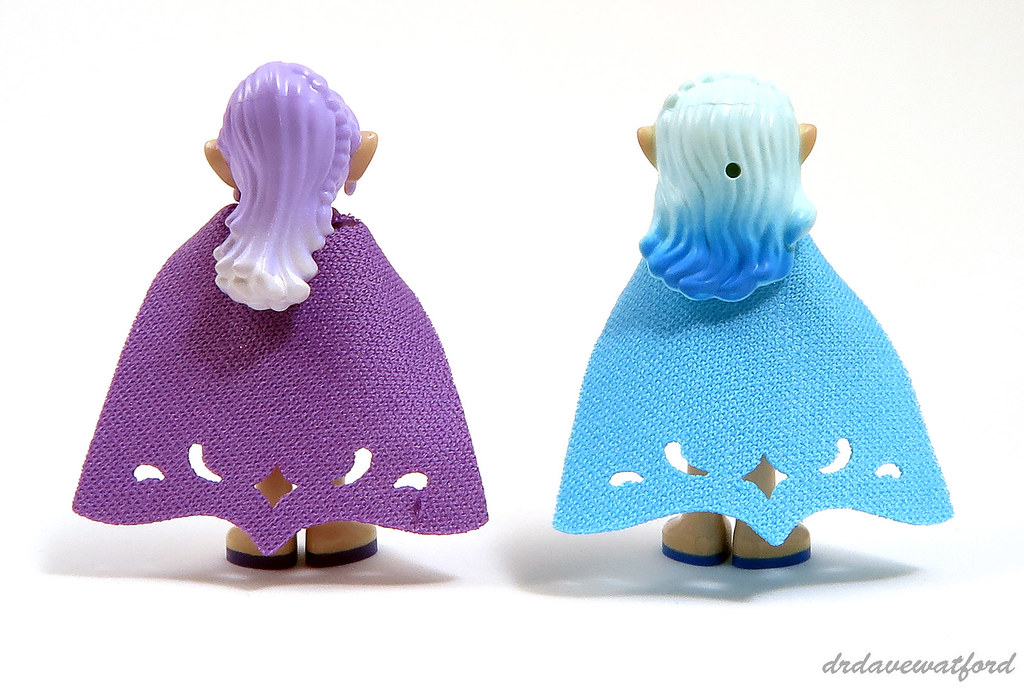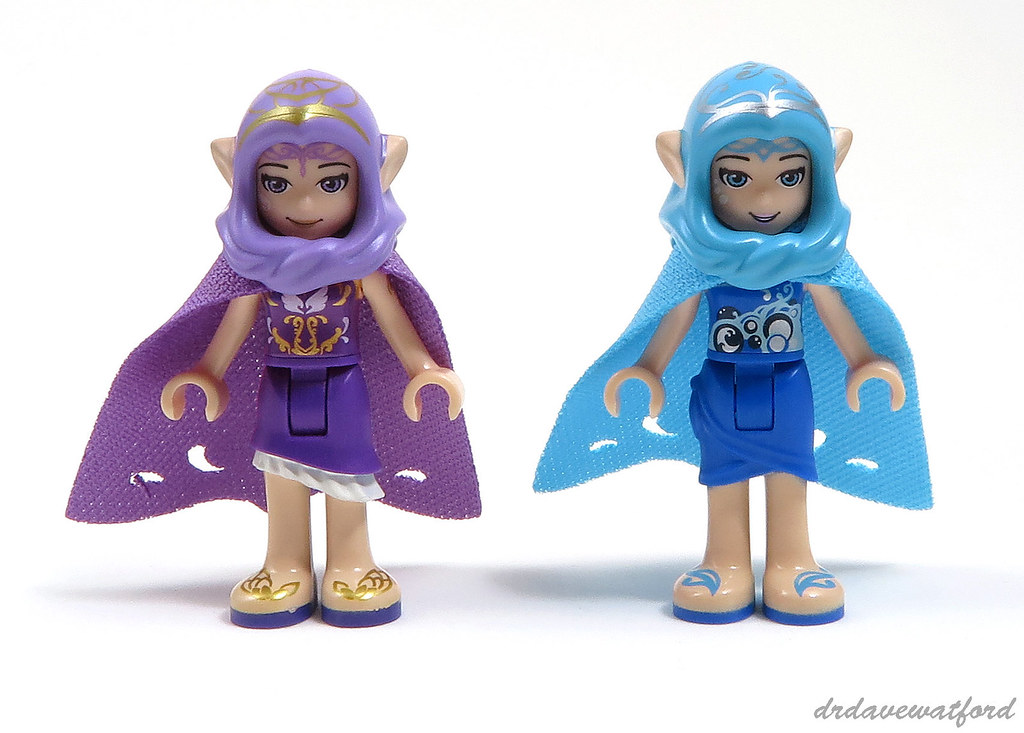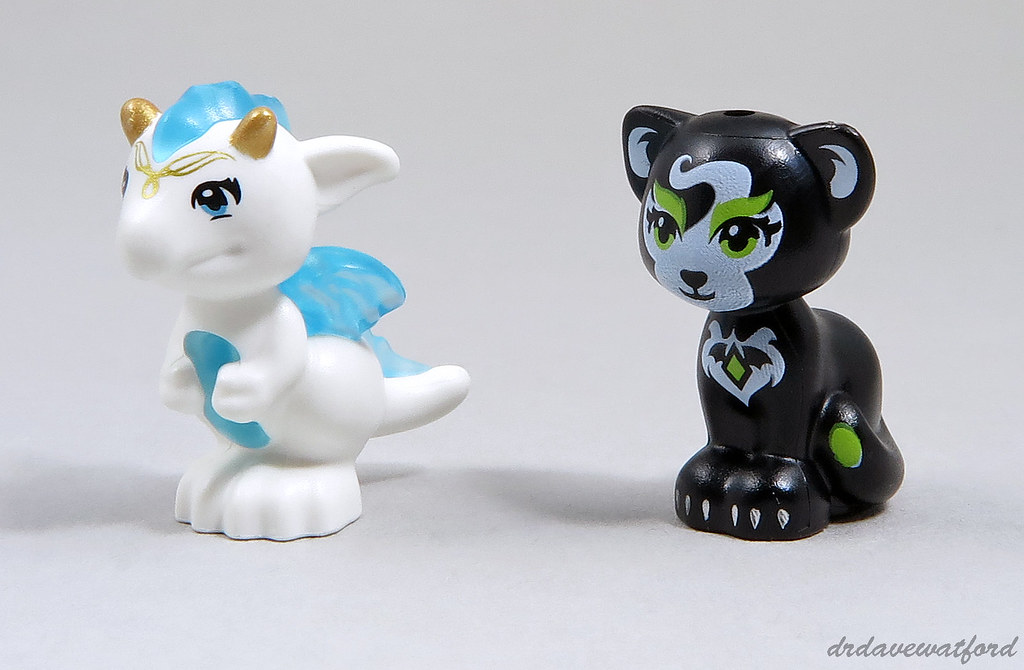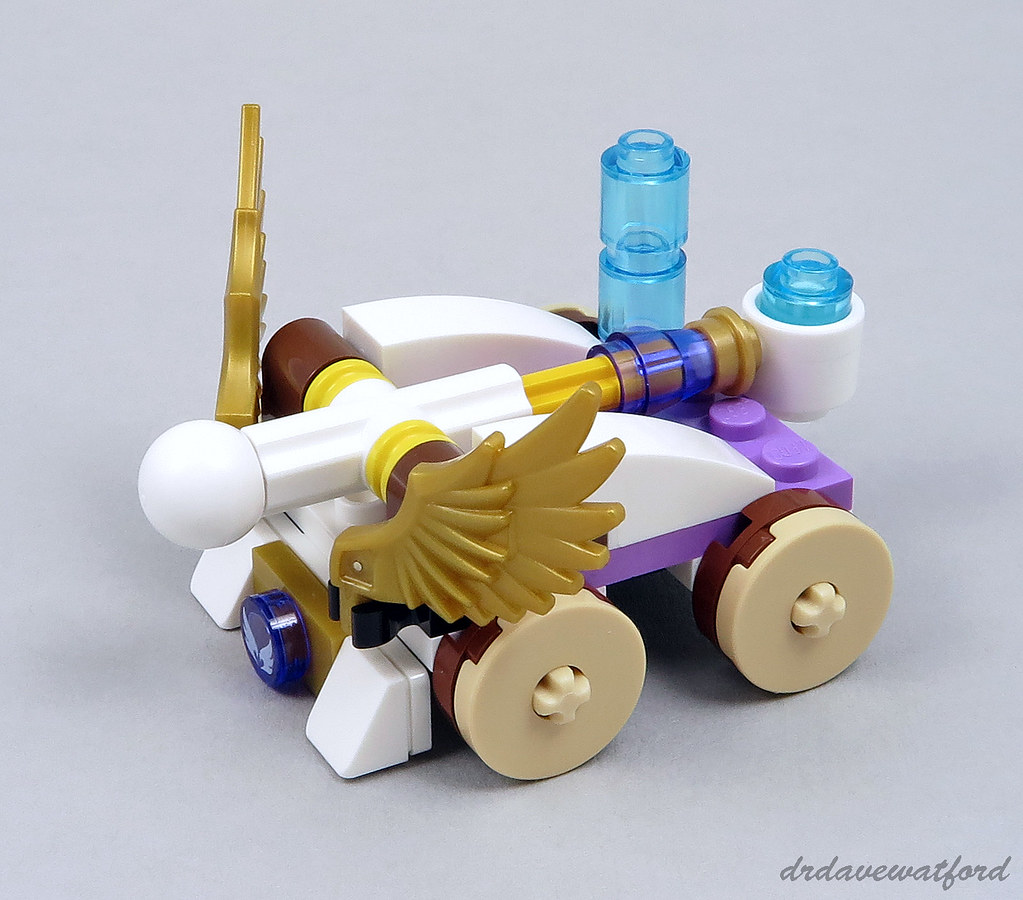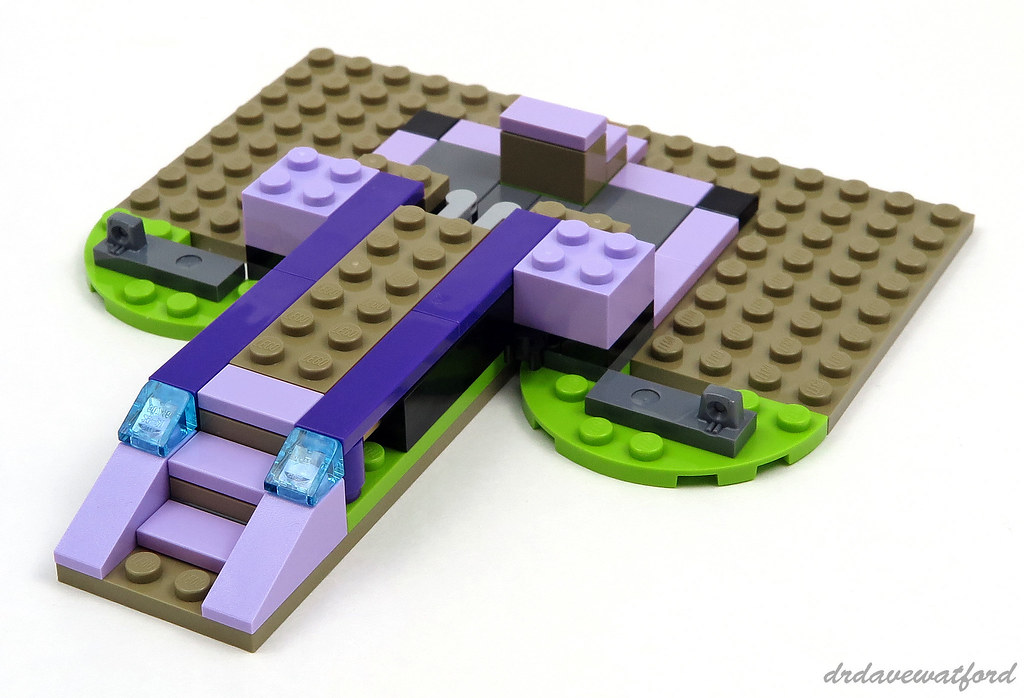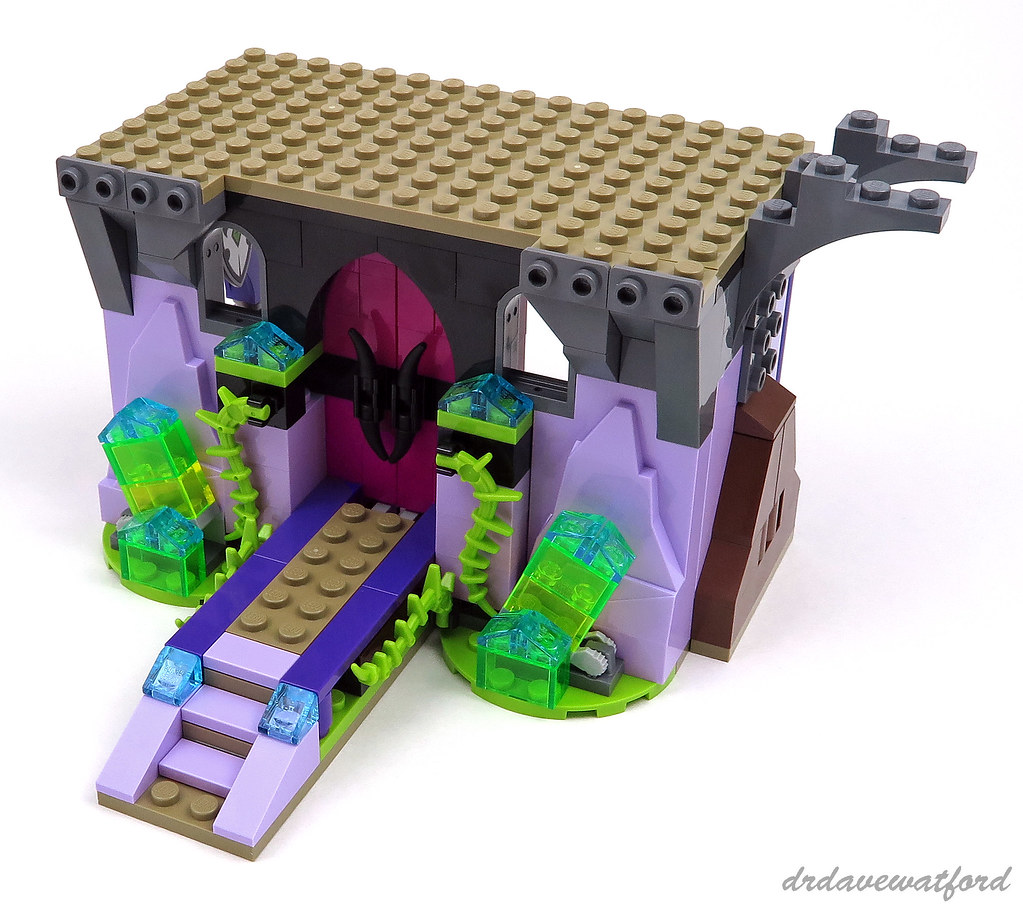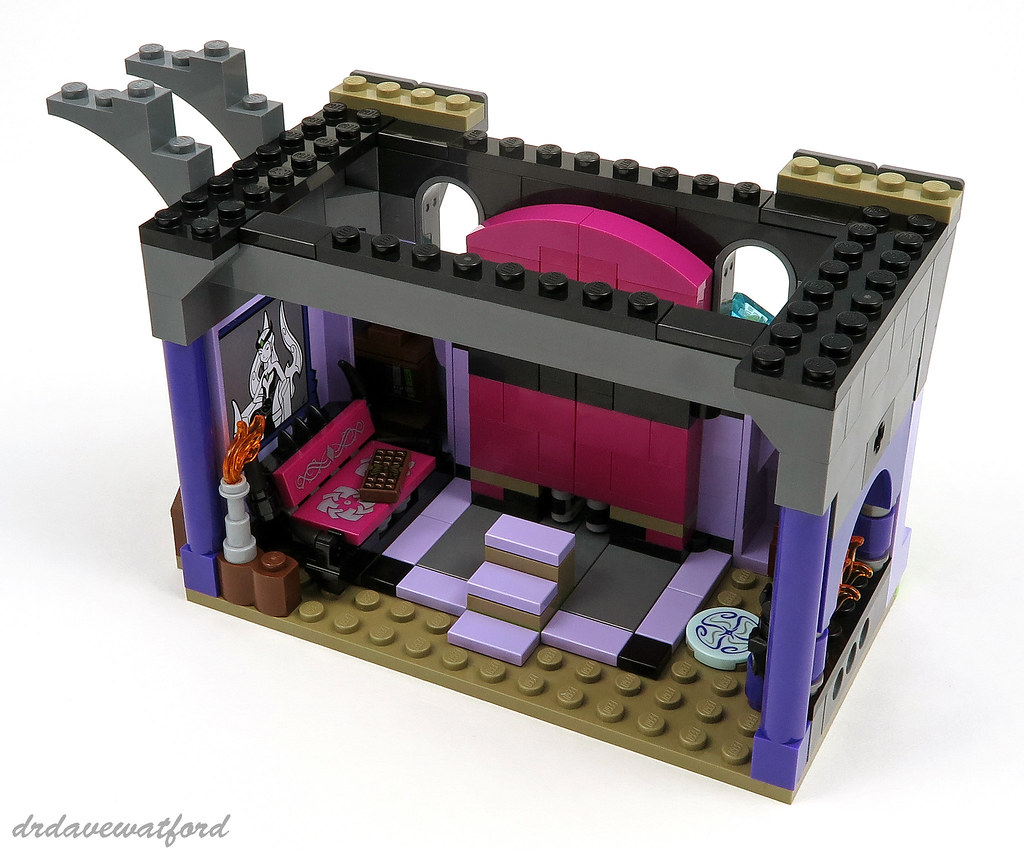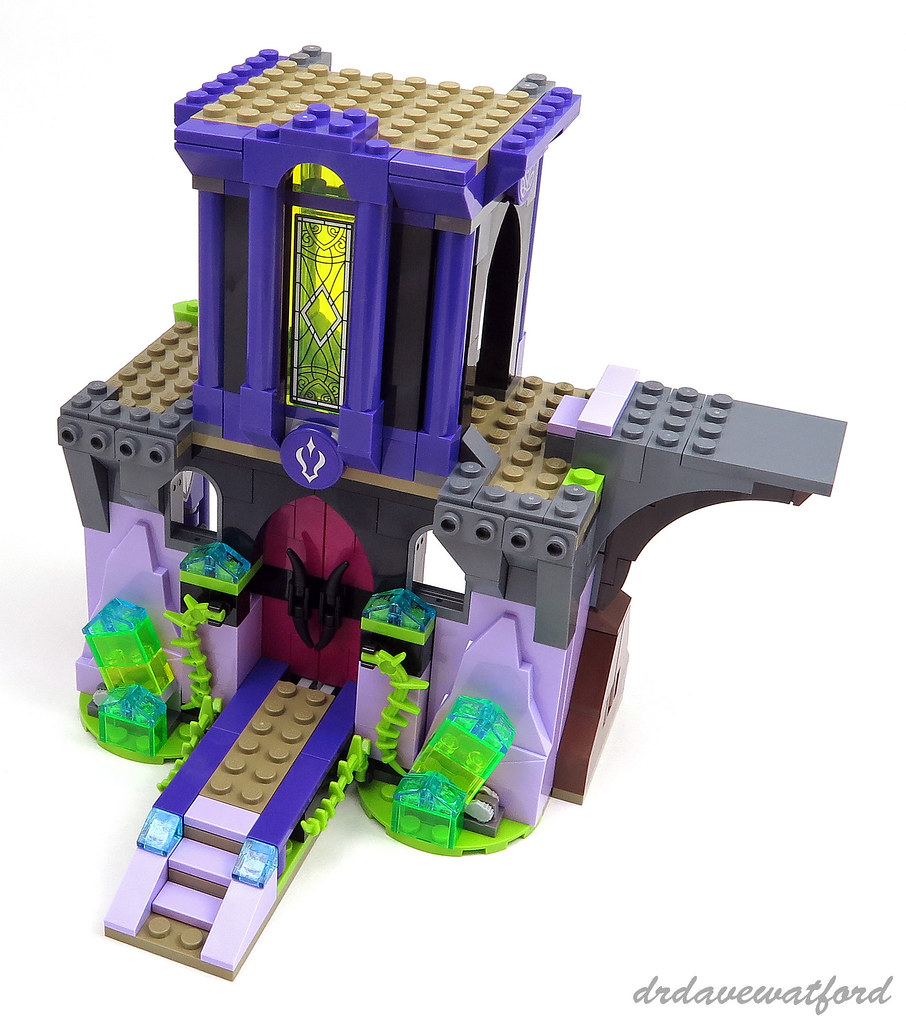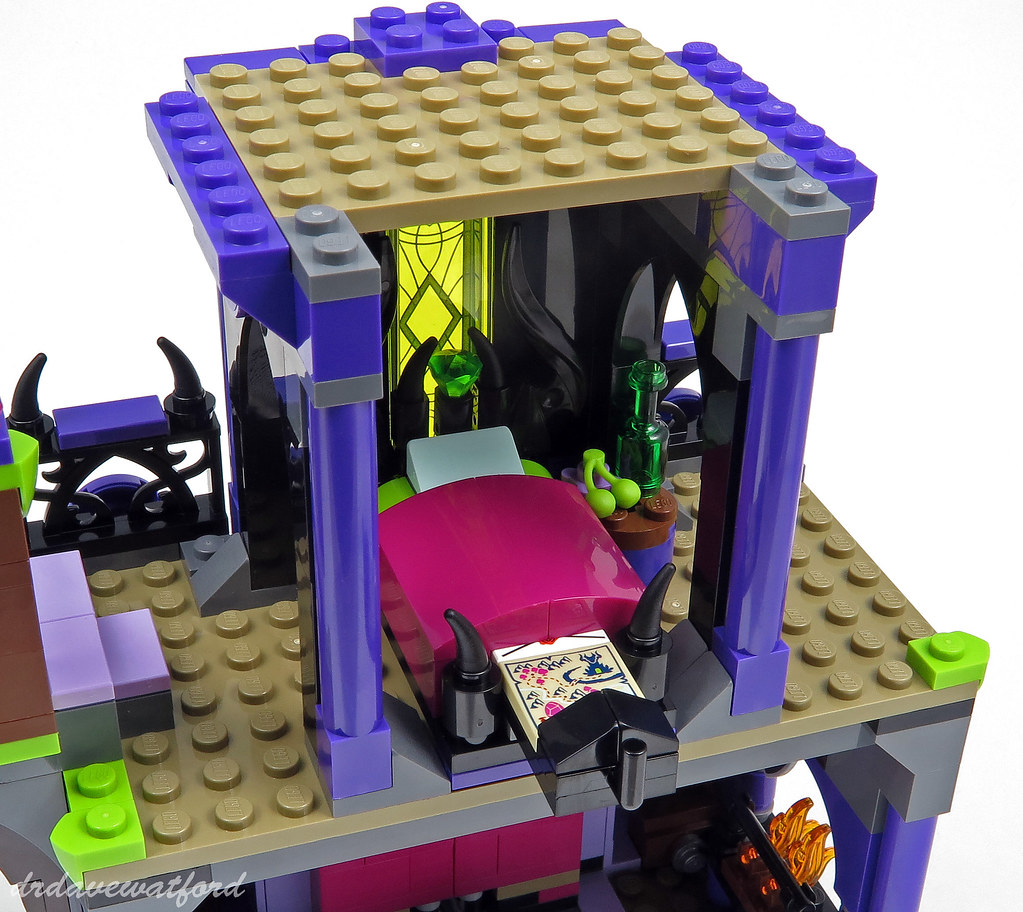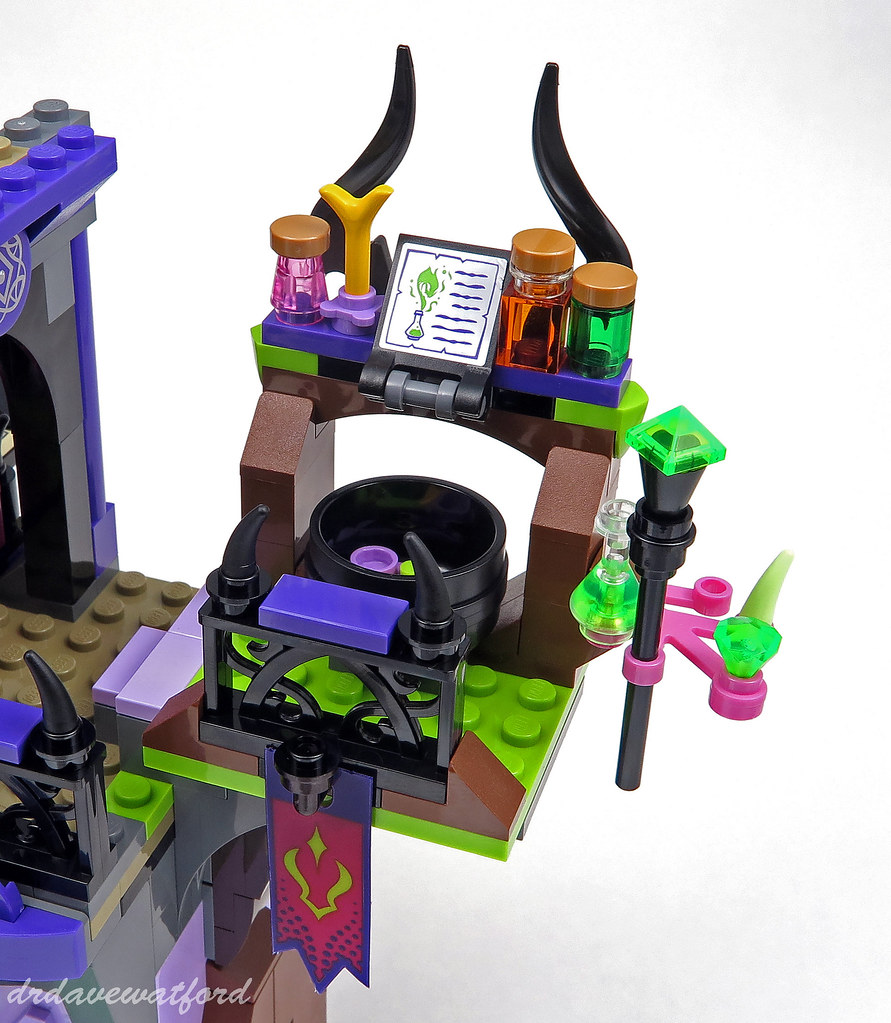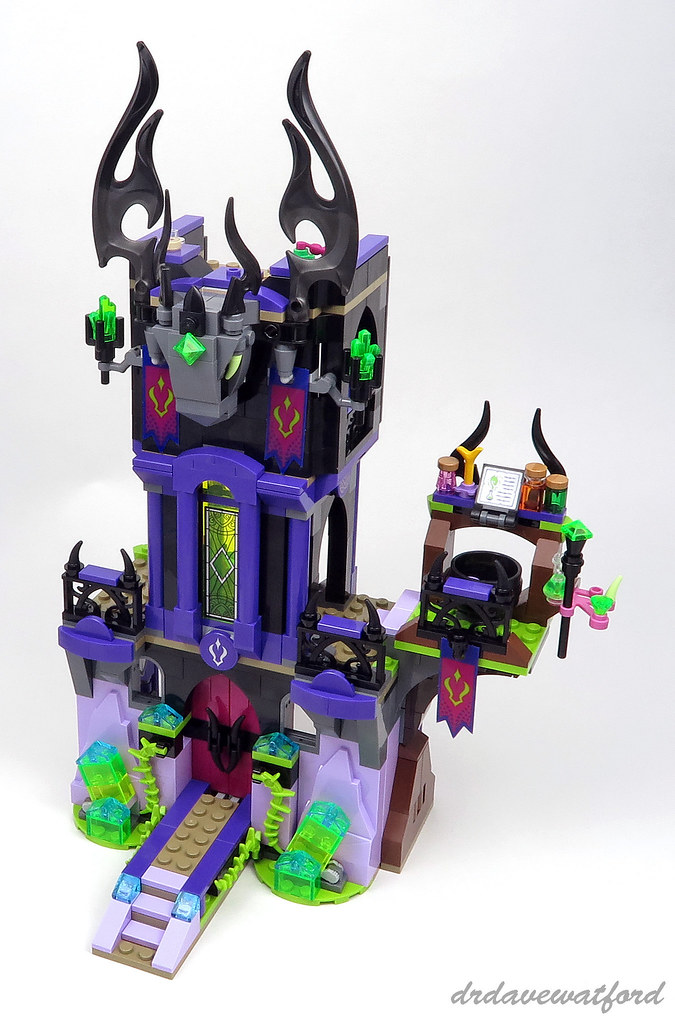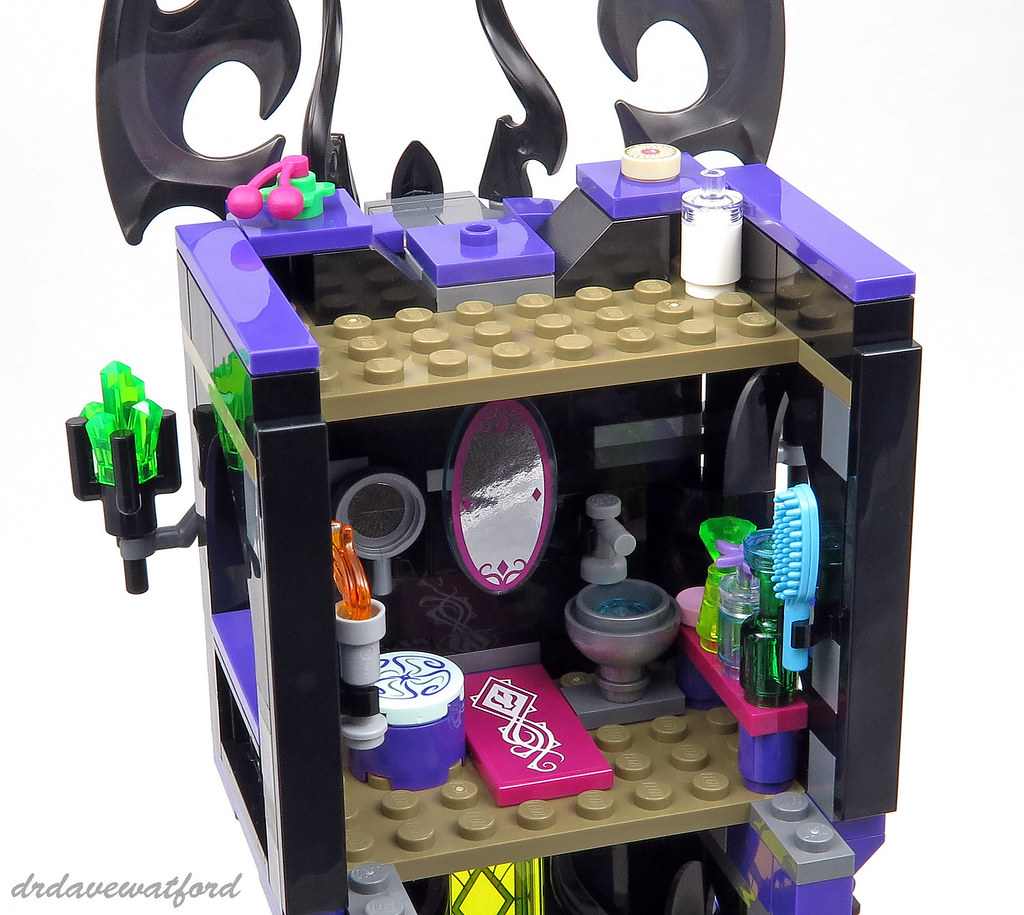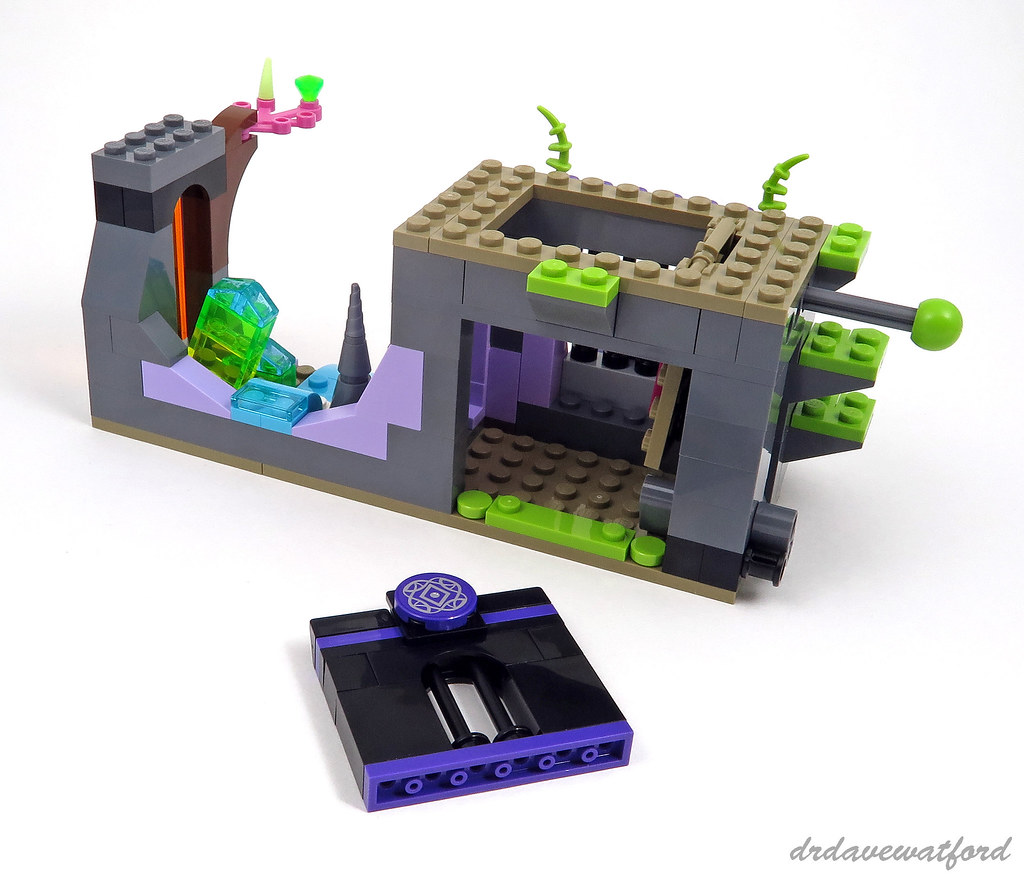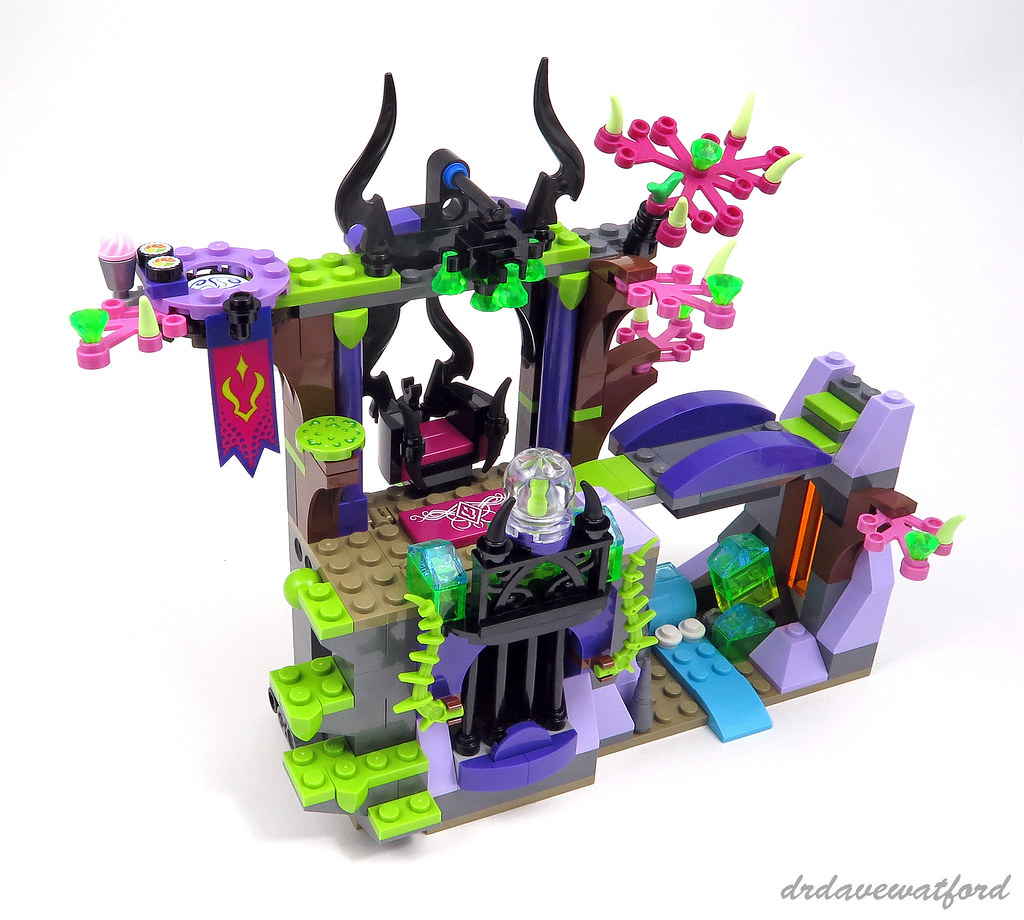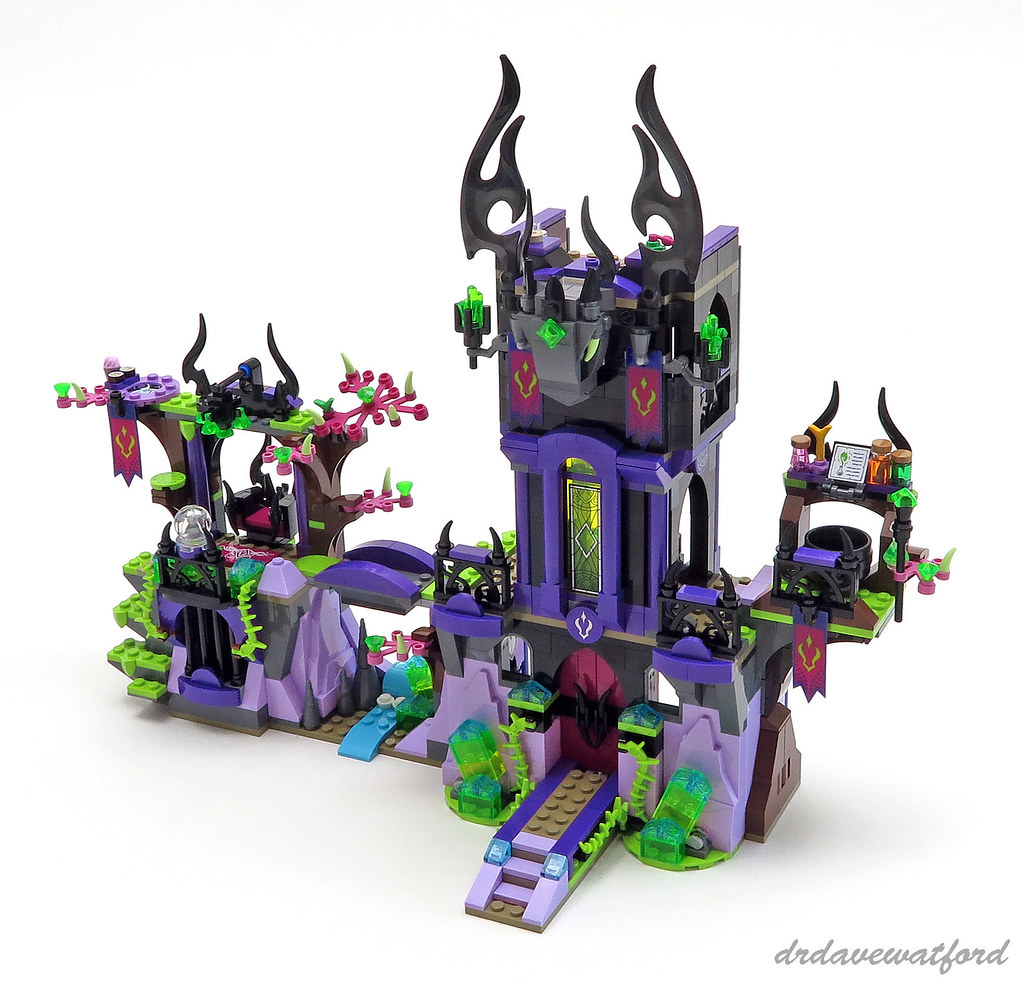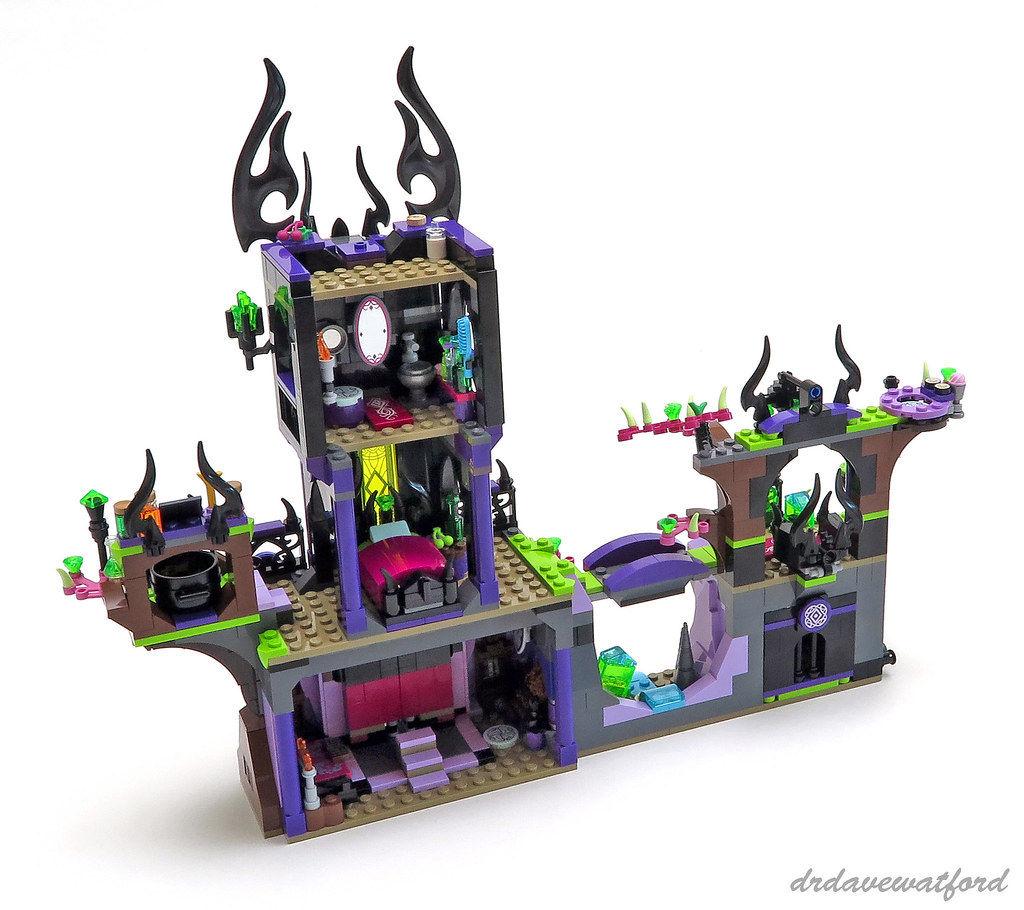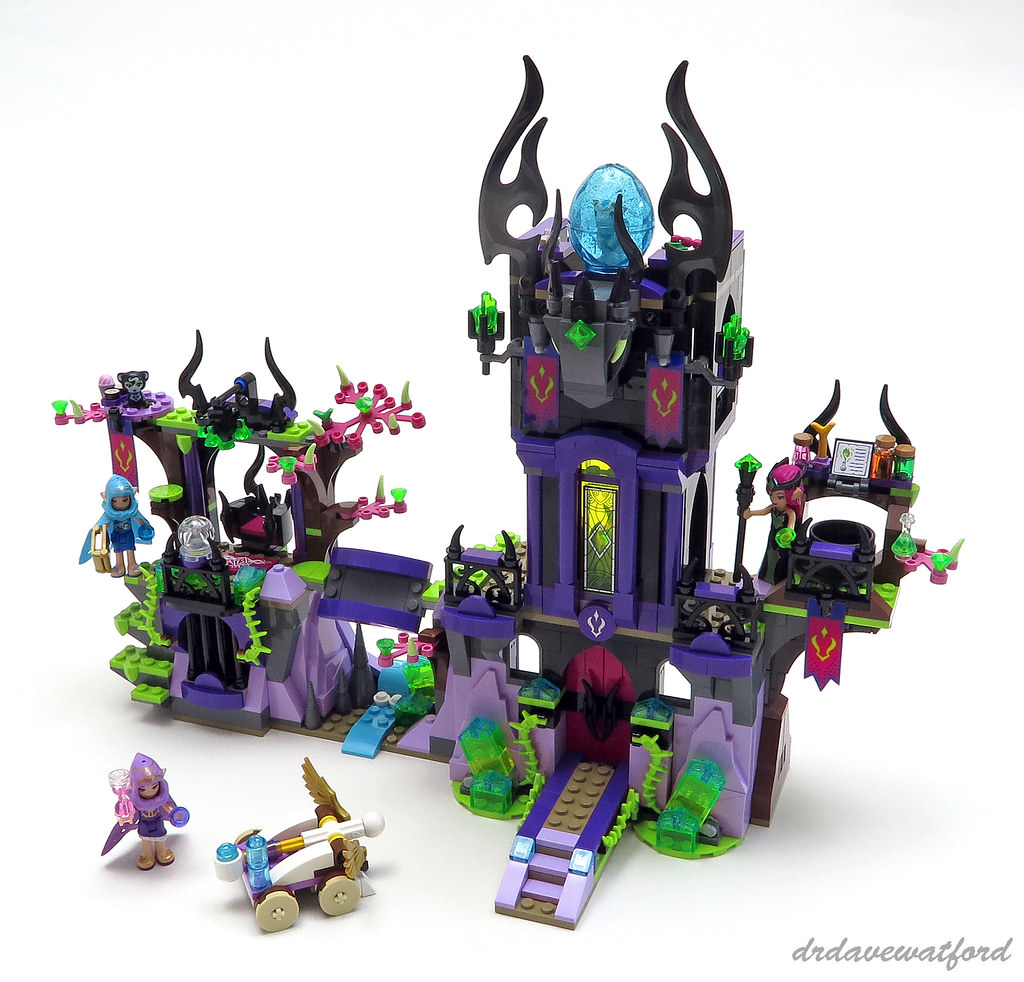There seems to be so much love for Classic Space right now that it can be easy to forget quite how many other Space subthemes LEGO has released over the years. Although I was lucky that my youth coincided with the late 1970's Classic Space sweet spot, I subsequently missed much of the space-related goodness that followed on account of my lengthy LEGO Dark Ages. Ironically enough, it was another space theme - Star Wars - that ended up dragging me out of the darkness, but it turned out that a whole bunch of interesting LEGO Space offerings had come and gone during my absence. I've therefore been on a mission to gradually fill in the gaps ever since.
One of the LEGO Space subthemes that I missed during my lengthy hiatus was Space Police. LEGO released a clutch of Space sets under the Space Police banner in 1989, and I assume that these sets were well-received since the company subsequently decided to follow them up with a number of Space Police 2 sets a few years later. Released in 1992, 6897 Rebel Hunter was the third largest set in the Space Police 2 line up as measured by parts count, and I was delighted to find a boxed, complete example of the set on eBay a few years back which I gratefully snapped up. The front of the box (above) shows the craft flying over a barren planet surface against a backdrop of a blurry starfield and a green laser grid. A price label from sadly-departed UK retailer Woolworths can be seen in the top right corner; allowing for inflation the £13.99 retail price would be the equivalent of £26.57 in today's money according to the Bank of England's Inflation Calculator - decidedly expensive for a set containing just 140 elements and two minifigures. The back of the box (below) highlights a couple of the set's play features as well as showcasing three alternative builds.
The set contents are contained within a white cardboard tray which fits neatly into the outer box. In addition to the set's 140 elements there's a single instruction booklet, the front cover of which you can see below. The instruction booklet comprises just 16 pages from cover to cover; unlike current instruction booklets all the pages are taken up by the building guide, and advertising is conspicuous by its absence.
The back cover of the instruction booklet, which is dominated by a stylised image of the completed build, can be seen below. One of the set's main play features, a portable prison pod, is showcased bottom left together with the set's two minifigures.
Bricklink prosaically names the set's two minifigures as Space Police 2 and Blacktron 2. Space Police 2 can be seen below. This minifigure has appeared in a total of seven sets. The white torso with its green, black and red print is exclusive to this minifigure, while the green legs with white hips have only appeared as a part of two minifigures including this one. The head, which is printed with a red brown fringe and eyebrows plus a black headset, has featured much more widely, appearing as a part of 24 minifigures across almost 50 sets in total. While the black helmet has graced literally hundreds of sets, the retractable trans-green visor has appeared in just 14. This minifigure is provided with an accessory in the form of a white loudhailer which is presumably supposed to represent a blaster.
This minifigure is kitted out with black airtanks which you can see in the image below. These largely obscure the back of the unprinted torso. The back of the head is also unprinted.
Bad guy Blacktron 2 (below) has appeared in 14 sets across both the Space Police 2 and Blacktron 2 Space subthemes. The white torso with its black and lime Blacktron 2 print has appeared as a part of 3 different minifigures and can be found in a total of 16 sets. All of the other constituent elements making up this minifigure are extremely common, appearing in one hundred sets or more; the head is printed with the classic LEGO standard grin pattern, while the visor is trans-neon green in colour.
Similar to the Space Police 2 minifigure, Blacktron 2 carries a pair of black airtanks. Once again the torso is unprinted, as is the back of the head.
The build proper commences with construction of the portable prison pod (below) with space inside for a single minifigure. The structure incorporates a hinged trans-green 4 x 4 x 4 1/3 windscreen element which is printed with the Space Police 2 logo and which has only ever appeared in three sets.
The prison pod is carried inside an open cargo bay, and this is next to be built. The walls of the cargo bay are made up of a number of hinge brick assemblies, and a couple of black 1 x 2 tiles printed with a red arrow, which can only be found in eight sets, provide some cosmetic embellishment. A trio of black Technic axles form a roof of sorts over the cargo bay, and the reason for this seemingly odd design decision will shortly become clear. The section of the ship between the cargo bay at the rear and the cockpit at the front features a couple of interesting elements that I hadn't seen before, namely a red modified 3 x 3 x 2 facet brick bottom, on top of which is a trans-green modified 3 x 3 x 2 facet brick top. The red facet brick is unique to this set, while the trans-green brick has only ever appeared in a total of three sets including this one.
The lower half of the cockpit consists of a specialised light grey 11 x 4 x 2 2/3 inverted slope element which has only ever appeared in four sets, while the cockpit canopy is made up of a hinged trans-green 10 x 4 x 2 1/3 windscreen element which has only ever appeared in three sets. The cockpit can accommodate a single minifigure with ease and is empty apart from a printed 45 degree 2 x 2 slope which serves as a control panel. The cockpit is flanked by a couple of red 1 x 4 antennae which attach via a combination of modified 1 x 1 plates.
The front and rear bounds of the cargo bay are made up of light grey modified 2 x 4 x 2 bricks with holes on the sides. This useful element can only be found in a total of four sets in this colour, and there are three of these elements in the set. Four black 4 x 4 x 5 stanchions attach to the anti-studs on the sides of the modified 2 x 4 x 2 bricks, and a jet engine is attached to the base of each of the stanchions. You can see the completed Rebel Hunter ship together with both minifigures below.
The ship's cargo bay provides the set's most interesting play feature. As previously described, the cargo bay walls incorporate a number of hinge bricks which enable the walls to flex outwards. When the walls are fully extended, as in the picture above, the prison pod is held firmly in place. When however the walls are flexed outwards the prison pod is released and the back of the ship is pulled forwards; at maximal flexion (below) the rear of the ship is pulled forward by around 50mm. The presence of this mechanism explains the use of Technic axles for the cargo bay roof - as the rear of the ship concertinas forward the axles slide through holes in Technic bricks at the rear of the ship; admittedly the protruding Technic axles look a bit untidy, but it's a price worth paying for the inclusion of a neat play feature.
Overall, it has to be acknowledged that the Rebel Hunter isn't the prettiest LEGO craft that you'll ever see - "quirky" is probably the politest way to describe it. That having been said, I'm a big fan of the colour scheme, and the build also incorporates a number of cool play features, particularly the unusual prison pod release mechanism. Design-wise, inspiration has clearly been taken from earlier Space subthemes, but there's also a nod to the future in the form of an increased reliance on more specialised elements (not least the distinctly POOP-like light grey element making up the lower half of the cockpit) and the inclusion of Technic elements.
When I conclude my reviews of retired sets I'm often reluctantly obliged to report that a complete, boxed example of the set in question will cost you an arm and a leg. On this occasion however I'm pleased to reveal that copies of the set actually seem to be very reasonably priced on Bricklink, with at least one boxed example available for less than £20 at time of writing. Copies of the set also occasionally crop up on eBay which is where I found mine; my complete, boxed copy set me back just £15 plus postage, although that was admittedly a few years ago now. Not a classic, then, but still worth picking up at current prices if you have any interest in LEGO Space I reckon.
Friday, 21 July 2017
Monday, 3 July 2017
National Elf Service
The Elves theme carried off the "Better Than Expected" award in the 2016 Gimme LEGO Awards by virtue of a slew of quality 2016 offerings, and of all the Elves sets to date, the one that has consistently appealed to me the most has been 41180 Ragana's Magic Shadow Castle. I've been meaning to dive into my copy for ages, and I'm therefore pleased to report that I've finally gotten around to cracking open my copy and getting aquainted with the contents. So did it live up my my expectations? Read on to find out!
As is the case for Friends sets the front of the Elves set boxes bow out slightly in order to accommodate scalloped cutaways on the left and right edges. While it's an interesting design quirk, it makes the boxes a pain to stack. Although I'm not a fan of the atypical box architecture, I'm very much a fan of the richly detailed and gloriously colourful artwork on the front of the box (above). Some of the key characters from the theme including Azari, Naida and Aira are shown on the right side of the front of box, while front and centre there's an image of the completed Shadow Castle build against a beautiful mountainous backdrop. The back of the box (below) employs a marginally more muted colour palette and features a series of boxouts which focus on play features of the set; there's also mention of a free Elves app in the bottom right hand corner.
The set contents are accessed by cutting three tape seals at the side of the box. The box contains seven bags of elements numbered from 1 to 7, a pair of loose dark tan 8 x 16 plates and a hefty instruction booklet sealed in a bag. The bag containing the instruction booklet also contains two sticker sheets and two thin plastic sheets. You can see a scan of one of the plastic sheets below; each plastic sheet contains a pair of pop-out plastic banners.
The larger sticker sheet contains 17 stickers while the smaller sticker sheet, which has a mirrored finish, contains just two. The cover of the instruction booklet, which is basically the same as the artwork on the front of the box apart from the 8-12 age recommendation and the set name, can be seen below. The instruction booklet, which runs to 180 pages, includes a two-page inventory of elements, a brief Elves comic strip, a map of Elvendale and three pages of Elves and Friends-related advertising in addition to the building instructions.
The set contains three minidolls. Elf witch Ragana Shadowflame (below) is exclusive to this set, as are all the individual elements making up the minidoll. She's the villain of the piece, and according to the relevant set page on the Elves microsite she's snaffled the "beautiful and unique baby princess dragon egg" which she's placed triumphantly atop the tower of her Shadow Castle. I have to say that I'm a big fan of this minidoll; Ragana's elegant black dress features an attractive green and silver print, and I think that her magenta hair, black and green head-dress and face print look superb.
The back of Ragana's torso, which is hidden beneath her long magenta hair, is split horizontally between the light flesh colouring of her skin above and the top of her black dress below. Her hair has a small hole at the back to accommodate accessories, although it's frankly hard to imagine Ragana wearing a bow or other compatible accoutrements. There's no printing on the back of the head, torso or skirt.
Aira Windwhistler (below left) and Naida Riverheart (below right) are our two heroines. This version of Aira is currently exclusive to the set, although her head featuring medium lavender eyes and a tribal print on her forehead has graced three different versions of the Aira minidoll, and her long lavender hair with integrated elf ears has appeared as a part of four different incarnations of Aira in various sets. Her torso, which comprises a light flesh section above and a printed dark purple strapless dress below, is only appearing in a set for the third time, as is her lower half consisting of a dark purple and white asymmetric skirt, light flesh legs, and sandals with a gold feather pattern. Her medium lavender cloth cape, which is decorated with holes of various shapes, is unique to the set in this colour. Similar to Aira, this version of Naida is appearing in a set for the first time. Her head, light aqua braided hair, light flesh and blue printed torso, and blue skirt with light flesh legs and printed sandals have however all appeared as a part of other incarnations of Naida, although the medium azure cloth cape is exclusive to this version.
Similar to Ragana, both Aira and Naida have torsos which are split horizontally at the back between light flesh skin above and the tops of their strapless dresses below, although you'll have to take my word for that as the torsos are obscured by cloth capes in the picture below. What isn't evident from the front view is how both hair elements feature an interesting two-tone effect, although only Naida's hair incorporates a hole for accessories.
Both the Aira and Naida minidolls are supplied with alternative headgear in the form of hoods which you can see in the picture below. The hoods, which are decorated with gold and silver prints respectively, feature integrated elf ears and are both unique to this set as things currently stand.
In addition to the three minidolls the set also contains a pair of creatures. White baby dragon Estari is really quite lovely, featuring moulded trans-light blue accents and a gold head print plus gold horns. Estari is currently exclusive to this set. Ragana's black cat Jynx, which is decorated with a white and lime print, has only previously been available as a giveaway with Issue 4 of the LEGO Elves magazine released in April 2016.
As is customary these days the build is modular in nature, split into a total of seven stages each of which has its own numbered bag. Bag 1 contains the parts needed to construct the Aira and Naida minidolls, build a wheeled catapult and make a start on the castle. The catapult (below) rests on a medium lavender 4 x 4 plate which can only currently be found in three sets including this one. The catapult fires ammunition in the form of trans-light blue 1 x 1 round bricks. These are loaded into a bucket represented by a white saucepan element which has only ever appeared in four sets. The ammunition is flung forward by pushing down on a white Technic ball joint at the front of the vehicle which is only appearing in a set for the ninth time ever. Decoration is provided by a pair of bling pearl gold feathered wings together with a trans-purple 1 x 1 round tile printed with an Elves Wind Power icon which is appearing in a set for just the fifth time.
With the catapult completed it's time to make a start on the castle. This requires the remaining contents of Bag 1 plus one of the dark tan 8 x 16 plates. The dark tan plate forms the ground floor of the castle and is partially tiled in dark bluish grey, black and lavender. A couple of lime green 3 x 6 half round plates with 1 x 2 cutout are attached at the front; these are only appearing in a set for the sixth time in this colour. A path constructed on a dark tan 4 x 10 plate projects out from the front of the castle. This path has a central area, topped by the dark tan 2 x 6 plate that you can see in the picture below, that can slide backwards and forwards for reasons that will become clear later. A number of uncommon lavender elements appear at this stage of the build; 1 x 2 lavender tiles are appearing in a set for only the seventh time, while lavender 2 x 2 bricks and 3 x 1 33 degree slopes have only previously appeared in three sets. Dark purple 1 x 1 round bricks with open stud also make an appearance, having previously only appeared in eight sets.
During Stage 2 of the build, which utilises the elements in Bag 2 plus the remaining dark tan 8 x 16 plate, the ground floor of the castle is completed, starting with the front doors. These are made up of magenta bricks together with a couple of 1 x 3 magenta plates which have only previously appeared in nine sets; decoration is provided by a pair of cool-looking door handles which are fashioned from black horns. The reason for the sliding section of path at the front of the castle now becomes clear - it's attached to the doors, and when the path is pushed inwards the doors gracefully open. The completed doors are framed by a pair of black 1 x 3 x 3 arches above, while lower down the front entrance is decorated with lime vines and flanked by a pair of lavender 2 x 4 x 6 rock panels which are appearing in a set for only the second time in this colour. The area in front of the rock panels is embellished with crystalline structures comprising trans-bright green, trans-neon green and trans-light blue elements. The entrance also incorporates a pair of dark bluish grey 1 x 2 x 2 2/3 windows with rounded top which have only previously appeared in four sets.
Attention now shifts to the interior of the ground floor. A pair of bookcases are installed utilising stickered reddish brown 1 x 2 x 2 panels to represent books; these panels have only previously appeared in nine sets in this colour. A hearth is then constructed featuring a dark purple 1 x 6 x 2 arch which has only appeared in a set twice before. A stickered shield is mounted above the arch, and a stickered light aqua 2 x 2 round tile which presumably represents a rug is placed on the floor in front of the hearth; this element has previously only appeared in seven sets in this colour. A sizeable sticker depicting Ragana now needs to be applied to the inner surface of a 1 x 6 x 5 lavender panel, and it's a challenge to get the sticker straight and central. The panel is appearing in a set for only the fourth time in this colour. A bench seat utilizing stickered magenta tiles is constructed in front of the panel, and a reddish brown 1 x 2 tile printed with a chocolate bar pattern is casually dropped on the seat. A pair of dark purple 1 x 1 x 6 pillars make an appearance at this juncture, having only previously appeared in a set twice before, and two dark bluish grey 1 x 5 x 4 arches are attached on one side of the build in preparation for a supporting role later on. The walls are braced with a dark bluish grey 1 x 16 brick and then topped off with back plates and tiles. Finally, the remaining dark tan 8 x 16 plate is placed on top; note that in the picture below I've removed the dark tan 8 x 16 plate so as to let more light into the interior and thus better reveal the interior detail.
Stage 3 of the build involves construction of the first floor of the castle. This utilises a number of black 1 x 1 x 3 bricks together with more black 1 x 3 x 3 arches and dark purple 1 x 1 x 6 pillars. The centrepiece of the first floor is a stickered trans-neon green 1 x 2 x 5 brick without side supports; the stained glass effect is pleasing, but care needs to be taken to attach the sticker centrally or it'll look a mess. The trans-neon green brick, which has only appeared in a set three times before, is flanked by a pair of black 1 x 2 x 5 bricks which are appearing in a set for the first time ever in this colour, and by additional dark purple 1 x 1 x 6 pillars plus a dark purple 1 x 4 arch which has only previously appeared in five sets. Dark purple 45 degree 2 x 1 inverted slopes, previously included in only five sets, make an appearance at this point in the build, and a stickered dark purple 2 x 2 round tile is placed centrally below the stained glass window. The upper reaches of the first floor are fringed by a number of dark purple 45 degree 2 x 2 inverted slopes which have only previously been included in three sets.
Stage 4 is predominantly concerned with construction of first floor furnishings and the balcony to the right of the castle. First to be built is Ragana's bed, complete with magenta bedsheets which incorporate a pair of curved 2 x 4 x 2/3 slopes with no studs which are only appearing in a set for the fifth time in magenta. There's also a pillow represented by a light aqua double cheese slope. The bed features a rather sinister-looking headboard which includes a trans-bright green jewel that's appearing in a set for only the fourth time, plus a pair of black tribal flames. The bed incorporates a secret compartment which slides out to reveal a map and an envelope; the map is printed with the location of a dragon egg and has has only appeared in seven sets in total. The bed almost completely fills the interior of the first floor of the castle, although there's just about room for a small bedside table complete with a trans-green bottle.
The first floor balcony (below) is constructed upon a lime 6 x 6 plate and features a reddish brown arch. Placed on top of the arch are what appear to be potions; these are represented by a elements in a variety of trans colours, each topped by a medium dark flesh 1 x 1 round tile which is only appearing in a set for the seventh time. Alongside the potions is a black 2 x 2 flag stickered with a design which appears to be a potion recipe. A dark pink 4 x 3 plant leaf serves as a shelf and holds a number of items including a flask, a jewel and a staff; the staff is topped with a trans-bright green 45 degree 1 x 1 x 2/3 quadruple convex slope which can only be found in two other sets in this colour. Beneath the arch is a black cauldron inside which are a variety of elements including a bright light orange carrot top and a trans-bright green 1 x 1 round tile which can only be found in two other sets. A number of sections of black ornamental fencing, which are only appearing in a set for the fourth time in this colour, are then erected on the balcony and other exposed roof sections. Finally, one of the thin plastic banners mentioned earlier is popped out of its backing sheet and hung from the balcony.
Stage 5 of the build begins with the assembly of a dragon egg. This is fashioned from two glitter trans-light blue elements - a faceted 4 x 4 x 1 2/3 dragon egg top and a faceted 4 x 4 x 1 2/3 dragon egg bottom - which are unique to the set in this colour. The egg can comfortably accommodate Estari the baby dragon. Attention then switches to construction of the top level of the castle, the walls of which are predominantly black in colour and incorporate additional ornamental fences, as well as featuring two more plastic banners of the same design as the one hanging from the first floor balcony. A substantial dark bluish grey brick-built decorative feature is then constructed on the front wall; it looks like a stone animal head of some description, perhaps a dragon, with yellowish green horns for eyes and a trans-bright green 45 degree 1 x 1 x 2/3 quadruple convex slope embedded in its forehead. The ramparts at the top of the castle are topped off with dark purple tiles, along with a tan 1 x 1 round tile printed with a Jammie Dodger biscuit pattern; presumably the biscuit has been left there just in case Ragana gets peckish.... Next, two huge and imposing pearl dark grey 3.5 x 12 tribal flame elements are erected at the top of the tower. Finally, a couple of lamps featuring trans-bright green 1 x 1 rock with five points are attached to the outer walls and Stage 5 is done.
The interior of the top floor contains a number of furnishings including a stickered magenta 2 x 4 tile which presumably represents a rug, and a water-containing basin represented by a flat silver round 2 x 2 brick with dome bottom into which a trans-light blue 1 x 1 tile is placed. Alongside the basin is a magenta shelf which bears an assortment of bottles and other bathroom items. One of the bottles utilises an uncommon medium lavender flower with pointed petals and pin as a stopper. A pair of mirrors, represented by a flat silver frying pan and a trans-light blue oval shield onto which reflective stickers are applied, are then mounted on the wall.
With the main castle now complete it's time to move on to the surrounding structures. A dungeon with a throne room above are connected to the main castle via a bridge which spans a stream below, and the stream and dungeon are constructed during Stage 6 of the build. The simple stream is made up of a selection of medium azure elements together with a couple of white 1 x 1 round plates. Echoing the use of lavender rock panels at the base of the castle, the stream is framed by a selection of sloped lavender elements such as 65 degree 2 x 1 x 2 slopes which have only featured in five other sets in this colour and 45 degree 2 x 2 double convex slopes which have only previously featured in four. Lavender seems an odd choice of colour for rocks, but to my surprise it actually works pretty well in this context. Further crystalline structures made up of trans elements and similar to those at the base of the castle are constructed next to the stream. A wall containing a trans-orange 1 x 2 x 5 brick, which has previously only appeared in four sets in this colour, forms the boundary between the right side of the stream and the main castle, while a number of spikes, topped with flat silver unicorn horns, are placed to the left of the stream and have the potential to provide a sticky end for the unwary....
The dungeon is constructed on a dark tan 6 x 14 plate which is only appearing in a set for the fourth time. The dungeon wall adjacent to the stream is made up of another lavender 2 x 4 x 6 rock panel, while stone steps protrude from the exterior of the opposite wall. These steps, which are covered by lime green plates presumably representing moss or slime, ascend to the dungeon roof. The roof is made up of a dark tan trap door and trap door frame, both of which have appeared in less than ten sets in this colour. A stickered magenta 2 x 4 tile covers the trap door, while a lime Technic ball joint can be seen protruding from the exterior dungeon wall adjacent to the steps. This ball is attached to a Technic axle with stop which runs beneath the trap door, and when the ball joint is pulled outwards the trap door is triggered. The barred window at the front of the dungeon is comprised of four 1 x 4 antennae enclosed at the top by a purple 1 x 6 x 2 arch, while a removable brick-built panel which rests upon a lime modified 1 x 4 plate with 2 studs makes up the rear wall of the dungeon; a simple Technic mechanism ejects this panel, allowing the occupant of the dungeon to escape.
The final stage of the build involves the construction of a bridge over the stream and the assembly of Ragana's throne. The bridge appears to be sturdy, but actually tilts on its axis, hurling the unwary traveller into the stream below, or worse still, onto the spikes. A lime curved 2 x 2 slope, which is appearing in a set for only the seventh time in this colour, connects the bridge with the trap door. Similar to Ragana's bed, her black and magenta throne features a pair of black tribal flames at the rear. It rests on a 2 x 2 turntable and can spin 360 degrees if desired. A pair of dark purple columns flank the throne, and these are then enclosed by a number of reddish brown arches which represent tree trunks and branches. Dark pink 4 x 3 plant leaves decorate the branches, together with a rarer magenta 6 x 5 plant leaf which has appeared in only ten sets to date.
Above and to the left of the throne is an area set aside for Jynx the cat. This utilises a medium lavender round 4 x 4 plate with 2 x 2 hole which is only appearing in a set for the fifth time. Lucky old Jynx has been provided with a number of tasty treats including strawberry ice cream in the form of a bright pink round 1 x 1 plate with a swirled top, and sushi which is represented by really cool printed 1 x 1 round tiles which are only appearing in a set for the sixth time ever. The ice cream sits in a flat silver goblet which has only previously featured in seven sets in this colour. Jynx can jump up to his platform via a lime 2 x 2 tile printed with a foliage pattern which has appeared in less than ten sets to date. A chandelier of sorts hangs above the throne, with illumination provided by more trans-bright green jewels, while an ornamental fence topped with a crystal ball can be seen in front of the throne beyond the trap door.
The finished sections are combined to complete the castle as you can see in the pictures above and below. In addition to being connected by a couple of Technic pins at the base, the sections are also secured via a lime curved 2 x 2 slope and a couple of lime 2 x 2 corner plates, and the castle is consequently fairly sturdy.
You can see the completed castle build plus the wheeled catapult, minidolls and creatures below. Atop the castle is the glitter trans-light blue dragon egg, inside which is Estari the baby dragon. The bridge between the castle tower and throne section is shown in its rotated position.
I liked the look of this set from the first time I spied it, and I'm delighted to report that it didn't disappoint. I think the castle looks excellent, both with respect to its unusual colour palette and also its overall design which manages to be simultaneously imposing, whimsical and sinister, not to mention packed with nice details and fun play features. Furthermore the minidolls look great, although a strong case could be made for the inclusion of more than just three of them given the size and cost of the set.
41180 Ragana's Magic Shadow Castle includes 1,014 elements and was released in the summer of 2016. As of July 2017 it's still available at retail and has an RRP of £79.99 / US$99.99 / 89.99€ although in the UK and elsewhere it's been frequently discounted; my own copy cost me £49.97 from Amazon's UK site back in November 2016, and at the time of writing it's 31% off RRP at Amazon.co.uk (link here) and 23% off RRP on Amazon's US site (link here). As you may have already gathered I'm a big fan of this set and would recommend it at RRP; at less than £50 it's a steal....
As is the case for Friends sets the front of the Elves set boxes bow out slightly in order to accommodate scalloped cutaways on the left and right edges. While it's an interesting design quirk, it makes the boxes a pain to stack. Although I'm not a fan of the atypical box architecture, I'm very much a fan of the richly detailed and gloriously colourful artwork on the front of the box (above). Some of the key characters from the theme including Azari, Naida and Aira are shown on the right side of the front of box, while front and centre there's an image of the completed Shadow Castle build against a beautiful mountainous backdrop. The back of the box (below) employs a marginally more muted colour palette and features a series of boxouts which focus on play features of the set; there's also mention of a free Elves app in the bottom right hand corner.
The set contents are accessed by cutting three tape seals at the side of the box. The box contains seven bags of elements numbered from 1 to 7, a pair of loose dark tan 8 x 16 plates and a hefty instruction booklet sealed in a bag. The bag containing the instruction booklet also contains two sticker sheets and two thin plastic sheets. You can see a scan of one of the plastic sheets below; each plastic sheet contains a pair of pop-out plastic banners.
The larger sticker sheet contains 17 stickers while the smaller sticker sheet, which has a mirrored finish, contains just two. The cover of the instruction booklet, which is basically the same as the artwork on the front of the box apart from the 8-12 age recommendation and the set name, can be seen below. The instruction booklet, which runs to 180 pages, includes a two-page inventory of elements, a brief Elves comic strip, a map of Elvendale and three pages of Elves and Friends-related advertising in addition to the building instructions.
The set contains three minidolls. Elf witch Ragana Shadowflame (below) is exclusive to this set, as are all the individual elements making up the minidoll. She's the villain of the piece, and according to the relevant set page on the Elves microsite she's snaffled the "beautiful and unique baby princess dragon egg" which she's placed triumphantly atop the tower of her Shadow Castle. I have to say that I'm a big fan of this minidoll; Ragana's elegant black dress features an attractive green and silver print, and I think that her magenta hair, black and green head-dress and face print look superb.
The back of Ragana's torso, which is hidden beneath her long magenta hair, is split horizontally between the light flesh colouring of her skin above and the top of her black dress below. Her hair has a small hole at the back to accommodate accessories, although it's frankly hard to imagine Ragana wearing a bow or other compatible accoutrements. There's no printing on the back of the head, torso or skirt.
Aira Windwhistler (below left) and Naida Riverheart (below right) are our two heroines. This version of Aira is currently exclusive to the set, although her head featuring medium lavender eyes and a tribal print on her forehead has graced three different versions of the Aira minidoll, and her long lavender hair with integrated elf ears has appeared as a part of four different incarnations of Aira in various sets. Her torso, which comprises a light flesh section above and a printed dark purple strapless dress below, is only appearing in a set for the third time, as is her lower half consisting of a dark purple and white asymmetric skirt, light flesh legs, and sandals with a gold feather pattern. Her medium lavender cloth cape, which is decorated with holes of various shapes, is unique to the set in this colour. Similar to Aira, this version of Naida is appearing in a set for the first time. Her head, light aqua braided hair, light flesh and blue printed torso, and blue skirt with light flesh legs and printed sandals have however all appeared as a part of other incarnations of Naida, although the medium azure cloth cape is exclusive to this version.
Similar to Ragana, both Aira and Naida have torsos which are split horizontally at the back between light flesh skin above and the tops of their strapless dresses below, although you'll have to take my word for that as the torsos are obscured by cloth capes in the picture below. What isn't evident from the front view is how both hair elements feature an interesting two-tone effect, although only Naida's hair incorporates a hole for accessories.
Both the Aira and Naida minidolls are supplied with alternative headgear in the form of hoods which you can see in the picture below. The hoods, which are decorated with gold and silver prints respectively, feature integrated elf ears and are both unique to this set as things currently stand.
In addition to the three minidolls the set also contains a pair of creatures. White baby dragon Estari is really quite lovely, featuring moulded trans-light blue accents and a gold head print plus gold horns. Estari is currently exclusive to this set. Ragana's black cat Jynx, which is decorated with a white and lime print, has only previously been available as a giveaway with Issue 4 of the LEGO Elves magazine released in April 2016.
As is customary these days the build is modular in nature, split into a total of seven stages each of which has its own numbered bag. Bag 1 contains the parts needed to construct the Aira and Naida minidolls, build a wheeled catapult and make a start on the castle. The catapult (below) rests on a medium lavender 4 x 4 plate which can only currently be found in three sets including this one. The catapult fires ammunition in the form of trans-light blue 1 x 1 round bricks. These are loaded into a bucket represented by a white saucepan element which has only ever appeared in four sets. The ammunition is flung forward by pushing down on a white Technic ball joint at the front of the vehicle which is only appearing in a set for the ninth time ever. Decoration is provided by a pair of bling pearl gold feathered wings together with a trans-purple 1 x 1 round tile printed with an Elves Wind Power icon which is appearing in a set for just the fifth time.
With the catapult completed it's time to make a start on the castle. This requires the remaining contents of Bag 1 plus one of the dark tan 8 x 16 plates. The dark tan plate forms the ground floor of the castle and is partially tiled in dark bluish grey, black and lavender. A couple of lime green 3 x 6 half round plates with 1 x 2 cutout are attached at the front; these are only appearing in a set for the sixth time in this colour. A path constructed on a dark tan 4 x 10 plate projects out from the front of the castle. This path has a central area, topped by the dark tan 2 x 6 plate that you can see in the picture below, that can slide backwards and forwards for reasons that will become clear later. A number of uncommon lavender elements appear at this stage of the build; 1 x 2 lavender tiles are appearing in a set for only the seventh time, while lavender 2 x 2 bricks and 3 x 1 33 degree slopes have only previously appeared in three sets. Dark purple 1 x 1 round bricks with open stud also make an appearance, having previously only appeared in eight sets.
During Stage 2 of the build, which utilises the elements in Bag 2 plus the remaining dark tan 8 x 16 plate, the ground floor of the castle is completed, starting with the front doors. These are made up of magenta bricks together with a couple of 1 x 3 magenta plates which have only previously appeared in nine sets; decoration is provided by a pair of cool-looking door handles which are fashioned from black horns. The reason for the sliding section of path at the front of the castle now becomes clear - it's attached to the doors, and when the path is pushed inwards the doors gracefully open. The completed doors are framed by a pair of black 1 x 3 x 3 arches above, while lower down the front entrance is decorated with lime vines and flanked by a pair of lavender 2 x 4 x 6 rock panels which are appearing in a set for only the second time in this colour. The area in front of the rock panels is embellished with crystalline structures comprising trans-bright green, trans-neon green and trans-light blue elements. The entrance also incorporates a pair of dark bluish grey 1 x 2 x 2 2/3 windows with rounded top which have only previously appeared in four sets.
Attention now shifts to the interior of the ground floor. A pair of bookcases are installed utilising stickered reddish brown 1 x 2 x 2 panels to represent books; these panels have only previously appeared in nine sets in this colour. A hearth is then constructed featuring a dark purple 1 x 6 x 2 arch which has only appeared in a set twice before. A stickered shield is mounted above the arch, and a stickered light aqua 2 x 2 round tile which presumably represents a rug is placed on the floor in front of the hearth; this element has previously only appeared in seven sets in this colour. A sizeable sticker depicting Ragana now needs to be applied to the inner surface of a 1 x 6 x 5 lavender panel, and it's a challenge to get the sticker straight and central. The panel is appearing in a set for only the fourth time in this colour. A bench seat utilizing stickered magenta tiles is constructed in front of the panel, and a reddish brown 1 x 2 tile printed with a chocolate bar pattern is casually dropped on the seat. A pair of dark purple 1 x 1 x 6 pillars make an appearance at this juncture, having only previously appeared in a set twice before, and two dark bluish grey 1 x 5 x 4 arches are attached on one side of the build in preparation for a supporting role later on. The walls are braced with a dark bluish grey 1 x 16 brick and then topped off with back plates and tiles. Finally, the remaining dark tan 8 x 16 plate is placed on top; note that in the picture below I've removed the dark tan 8 x 16 plate so as to let more light into the interior and thus better reveal the interior detail.
Stage 3 of the build involves construction of the first floor of the castle. This utilises a number of black 1 x 1 x 3 bricks together with more black 1 x 3 x 3 arches and dark purple 1 x 1 x 6 pillars. The centrepiece of the first floor is a stickered trans-neon green 1 x 2 x 5 brick without side supports; the stained glass effect is pleasing, but care needs to be taken to attach the sticker centrally or it'll look a mess. The trans-neon green brick, which has only appeared in a set three times before, is flanked by a pair of black 1 x 2 x 5 bricks which are appearing in a set for the first time ever in this colour, and by additional dark purple 1 x 1 x 6 pillars plus a dark purple 1 x 4 arch which has only previously appeared in five sets. Dark purple 45 degree 2 x 1 inverted slopes, previously included in only five sets, make an appearance at this point in the build, and a stickered dark purple 2 x 2 round tile is placed centrally below the stained glass window. The upper reaches of the first floor are fringed by a number of dark purple 45 degree 2 x 2 inverted slopes which have only previously been included in three sets.
Stage 4 is predominantly concerned with construction of first floor furnishings and the balcony to the right of the castle. First to be built is Ragana's bed, complete with magenta bedsheets which incorporate a pair of curved 2 x 4 x 2/3 slopes with no studs which are only appearing in a set for the fifth time in magenta. There's also a pillow represented by a light aqua double cheese slope. The bed features a rather sinister-looking headboard which includes a trans-bright green jewel that's appearing in a set for only the fourth time, plus a pair of black tribal flames. The bed incorporates a secret compartment which slides out to reveal a map and an envelope; the map is printed with the location of a dragon egg and has has only appeared in seven sets in total. The bed almost completely fills the interior of the first floor of the castle, although there's just about room for a small bedside table complete with a trans-green bottle.
The first floor balcony (below) is constructed upon a lime 6 x 6 plate and features a reddish brown arch. Placed on top of the arch are what appear to be potions; these are represented by a elements in a variety of trans colours, each topped by a medium dark flesh 1 x 1 round tile which is only appearing in a set for the seventh time. Alongside the potions is a black 2 x 2 flag stickered with a design which appears to be a potion recipe. A dark pink 4 x 3 plant leaf serves as a shelf and holds a number of items including a flask, a jewel and a staff; the staff is topped with a trans-bright green 45 degree 1 x 1 x 2/3 quadruple convex slope which can only be found in two other sets in this colour. Beneath the arch is a black cauldron inside which are a variety of elements including a bright light orange carrot top and a trans-bright green 1 x 1 round tile which can only be found in two other sets. A number of sections of black ornamental fencing, which are only appearing in a set for the fourth time in this colour, are then erected on the balcony and other exposed roof sections. Finally, one of the thin plastic banners mentioned earlier is popped out of its backing sheet and hung from the balcony.
Stage 5 of the build begins with the assembly of a dragon egg. This is fashioned from two glitter trans-light blue elements - a faceted 4 x 4 x 1 2/3 dragon egg top and a faceted 4 x 4 x 1 2/3 dragon egg bottom - which are unique to the set in this colour. The egg can comfortably accommodate Estari the baby dragon. Attention then switches to construction of the top level of the castle, the walls of which are predominantly black in colour and incorporate additional ornamental fences, as well as featuring two more plastic banners of the same design as the one hanging from the first floor balcony. A substantial dark bluish grey brick-built decorative feature is then constructed on the front wall; it looks like a stone animal head of some description, perhaps a dragon, with yellowish green horns for eyes and a trans-bright green 45 degree 1 x 1 x 2/3 quadruple convex slope embedded in its forehead. The ramparts at the top of the castle are topped off with dark purple tiles, along with a tan 1 x 1 round tile printed with a Jammie Dodger biscuit pattern; presumably the biscuit has been left there just in case Ragana gets peckish.... Next, two huge and imposing pearl dark grey 3.5 x 12 tribal flame elements are erected at the top of the tower. Finally, a couple of lamps featuring trans-bright green 1 x 1 rock with five points are attached to the outer walls and Stage 5 is done.
The interior of the top floor contains a number of furnishings including a stickered magenta 2 x 4 tile which presumably represents a rug, and a water-containing basin represented by a flat silver round 2 x 2 brick with dome bottom into which a trans-light blue 1 x 1 tile is placed. Alongside the basin is a magenta shelf which bears an assortment of bottles and other bathroom items. One of the bottles utilises an uncommon medium lavender flower with pointed petals and pin as a stopper. A pair of mirrors, represented by a flat silver frying pan and a trans-light blue oval shield onto which reflective stickers are applied, are then mounted on the wall.
With the main castle now complete it's time to move on to the surrounding structures. A dungeon with a throne room above are connected to the main castle via a bridge which spans a stream below, and the stream and dungeon are constructed during Stage 6 of the build. The simple stream is made up of a selection of medium azure elements together with a couple of white 1 x 1 round plates. Echoing the use of lavender rock panels at the base of the castle, the stream is framed by a selection of sloped lavender elements such as 65 degree 2 x 1 x 2 slopes which have only featured in five other sets in this colour and 45 degree 2 x 2 double convex slopes which have only previously featured in four. Lavender seems an odd choice of colour for rocks, but to my surprise it actually works pretty well in this context. Further crystalline structures made up of trans elements and similar to those at the base of the castle are constructed next to the stream. A wall containing a trans-orange 1 x 2 x 5 brick, which has previously only appeared in four sets in this colour, forms the boundary between the right side of the stream and the main castle, while a number of spikes, topped with flat silver unicorn horns, are placed to the left of the stream and have the potential to provide a sticky end for the unwary....
The dungeon is constructed on a dark tan 6 x 14 plate which is only appearing in a set for the fourth time. The dungeon wall adjacent to the stream is made up of another lavender 2 x 4 x 6 rock panel, while stone steps protrude from the exterior of the opposite wall. These steps, which are covered by lime green plates presumably representing moss or slime, ascend to the dungeon roof. The roof is made up of a dark tan trap door and trap door frame, both of which have appeared in less than ten sets in this colour. A stickered magenta 2 x 4 tile covers the trap door, while a lime Technic ball joint can be seen protruding from the exterior dungeon wall adjacent to the steps. This ball is attached to a Technic axle with stop which runs beneath the trap door, and when the ball joint is pulled outwards the trap door is triggered. The barred window at the front of the dungeon is comprised of four 1 x 4 antennae enclosed at the top by a purple 1 x 6 x 2 arch, while a removable brick-built panel which rests upon a lime modified 1 x 4 plate with 2 studs makes up the rear wall of the dungeon; a simple Technic mechanism ejects this panel, allowing the occupant of the dungeon to escape.
The final stage of the build involves the construction of a bridge over the stream and the assembly of Ragana's throne. The bridge appears to be sturdy, but actually tilts on its axis, hurling the unwary traveller into the stream below, or worse still, onto the spikes. A lime curved 2 x 2 slope, which is appearing in a set for only the seventh time in this colour, connects the bridge with the trap door. Similar to Ragana's bed, her black and magenta throne features a pair of black tribal flames at the rear. It rests on a 2 x 2 turntable and can spin 360 degrees if desired. A pair of dark purple columns flank the throne, and these are then enclosed by a number of reddish brown arches which represent tree trunks and branches. Dark pink 4 x 3 plant leaves decorate the branches, together with a rarer magenta 6 x 5 plant leaf which has appeared in only ten sets to date.
Above and to the left of the throne is an area set aside for Jynx the cat. This utilises a medium lavender round 4 x 4 plate with 2 x 2 hole which is only appearing in a set for the fifth time. Lucky old Jynx has been provided with a number of tasty treats including strawberry ice cream in the form of a bright pink round 1 x 1 plate with a swirled top, and sushi which is represented by really cool printed 1 x 1 round tiles which are only appearing in a set for the sixth time ever. The ice cream sits in a flat silver goblet which has only previously featured in seven sets in this colour. Jynx can jump up to his platform via a lime 2 x 2 tile printed with a foliage pattern which has appeared in less than ten sets to date. A chandelier of sorts hangs above the throne, with illumination provided by more trans-bright green jewels, while an ornamental fence topped with a crystal ball can be seen in front of the throne beyond the trap door.
The finished sections are combined to complete the castle as you can see in the pictures above and below. In addition to being connected by a couple of Technic pins at the base, the sections are also secured via a lime curved 2 x 2 slope and a couple of lime 2 x 2 corner plates, and the castle is consequently fairly sturdy.
You can see the completed castle build plus the wheeled catapult, minidolls and creatures below. Atop the castle is the glitter trans-light blue dragon egg, inside which is Estari the baby dragon. The bridge between the castle tower and throne section is shown in its rotated position.
I liked the look of this set from the first time I spied it, and I'm delighted to report that it didn't disappoint. I think the castle looks excellent, both with respect to its unusual colour palette and also its overall design which manages to be simultaneously imposing, whimsical and sinister, not to mention packed with nice details and fun play features. Furthermore the minidolls look great, although a strong case could be made for the inclusion of more than just three of them given the size and cost of the set.
41180 Ragana's Magic Shadow Castle includes 1,014 elements and was released in the summer of 2016. As of July 2017 it's still available at retail and has an RRP of £79.99 / US$99.99 / 89.99€ although in the UK and elsewhere it's been frequently discounted; my own copy cost me £49.97 from Amazon's UK site back in November 2016, and at the time of writing it's 31% off RRP at Amazon.co.uk (link here) and 23% off RRP on Amazon's US site (link here). As you may have already gathered I'm a big fan of this set and would recommend it at RRP; at less than £50 it's a steal....
Labels:
41180,
Elves,
lego,
Minidolls,
Ragana's Magic Shadow Castle
Subscribe to:
Comments (Atom)

